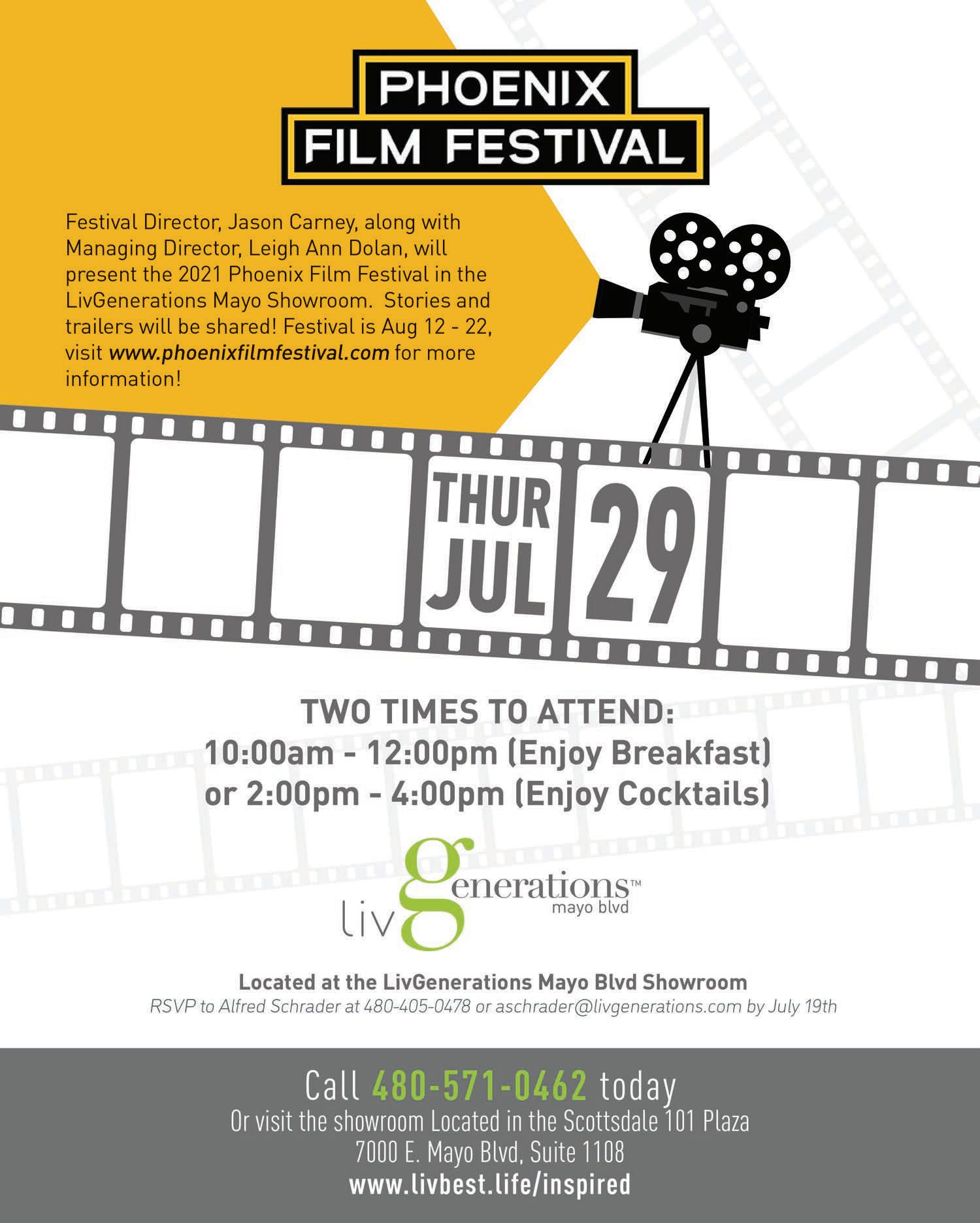VANDALIZED SYNAGOGUE
Tucson synagogue vandalized with swastika


Tucson synagogue vandalized with swastika

NICOLE RAZ | STAFF WRITER
Susan Miller can finally move around without feeling like the Tin Man from the “Wizard of Oz.”


“This heat feels so good on me, you have no idea,” she said.
Miller, 62, has arthritis and moved to Phoenix from Indiana last October. Like thousands of others newcomers, she is experiencing her first Arizona summer.
While it can’t get hot enough for her, others, like Yahm Reichart, are worried their flip-flops will melt into the ground.
“It feels like asphalt is burning my legs,” she said. This summer is expected to be hotter than average. A week before the season’s official start, Arizona already had a record-breaking six consecutive days of at least 115 degrees. Despite the heat, the U.S. Census Bureau estimates Maricopa County is the fastest-growing area in the country.
Miller’s husband, Paul, always dreamed of retiring in Arizona. His best friends live here, as well as some cousins.
“It’s getting closer to retirement age, and we started looking at houses three or four years ago,” she said. Before they made the move, they scoped out the area and made sure they could handle the heat.
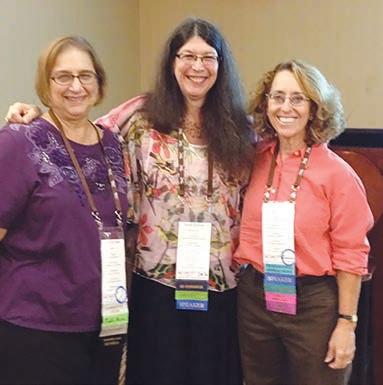
When Michael Beller set out three years ago to get a law passed in Arizona requiring Holocaust education in public schools, the response he got was clear.
“People told me this would never happen. They were like, ‘Not now, not ever. It will never happen in Arizona.’ And that was inside the Jewish community and out,” he said.
But on Wednesday, June 30, it happened. After a roller-coaster ride in the state legislature, HB2241 is now headed to Gov. Doug Ducey’s office. With his signature, Arizona’s public schools will be required to teach about the Holocaust and other genocides at least twice between seventh and twelfth grades. According to the Phoenix Holocaust Association and Arizona State University academics, Arizona will be the 16th state to require Holocaust education by statute.
Michael Beller, left, with Alexander White, Arizona House Rep. Alma Hernandez and Oskar Knoblauch. White and Knoblauch, both Holocaust survivors, testified before the Senate Education Committee on behalf of HB2682 in 2020. PHOTO COURTESY OF MICHAEL BELLER
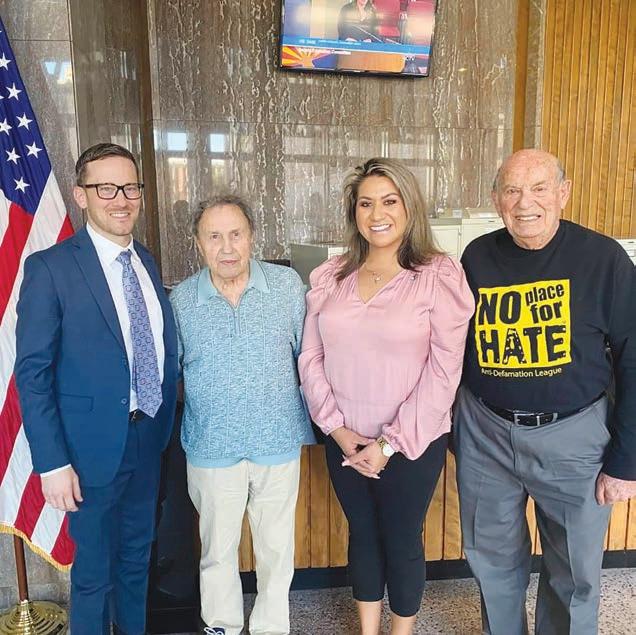
for our community.”
“So many people from so many different parts of the state invested countless hours over the last few years to make sure that this happens,” said Beller, who co-founded Arizona Teaching the Holocaust for the sole purpose of mandating Holocaust education in Arizona.
“I have never been prouder to be an elected official and a Jew in Arizona,” she said. “Knowing that all Arizona students will learn about the Holocaust gives me hope and restores my faith in humanity because we must teach
SEE
PAGE 3

To read more, go to p. 6.
SCREENSHOT BY NICOLE RAZ
degrees, Paul goes outside at various times of the day to warm up. “He gets cold inside.”
Reichart moved to Arizona June 16, with her fiance, Adam Levin, from Alabama. It wasn’t her idea.
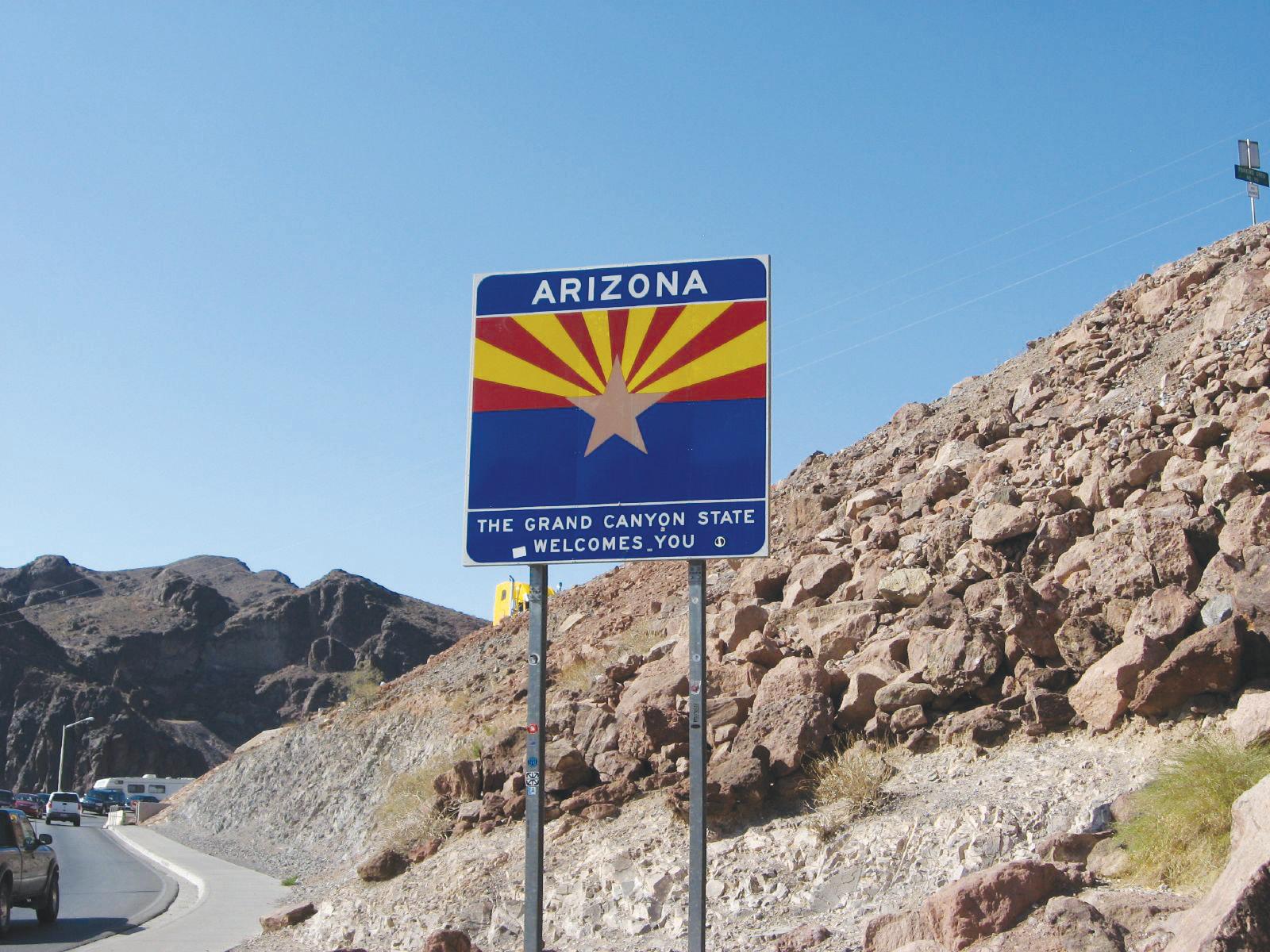
“I told him that if he comes with me for graduate school, the next place we move he gets to pick,” she said. Reichart is studying to become a librarian. Levin is studying to become an urban and environmental planner and it is his graduate program at Arizona State University that brought them to Chandler.
Reichart “is all about the humidity” and loved the humid Alabama summers. She knew that coming to Arizona would mean dry heat.
“I was really dreading it, but this heat — I just feel like I’m turning into a raisin and it’s very weird to be so thirsty all the time,” she joked. “I don’t understand why there’s such a big city in this desert; it’s very confusing. There’s no water anywhere — like why are there people here?’”
Levin was excited for the dry heat, which he calls more honest than humidity.
“You know, in a humid place, it’ll say it’s 80 but it feels like 100,” Reichart said, explaining Levin’s take.
Marvin Percha, a meteorologist for the National Weather Service in Phoenix, said it’s surprising that Arizona already reached such high temperatures so early in the year.
“That was quite an unusual heat wave, not only from the intensity, but the length of it,” he said, adding there’s a “decent chance” that Arizonans will see that kind of heat again in early July.
“Once we get the monsoon in here, we get more clouds, more moisture, so it makes it a little harder to get temperatures
slim,” in the 10% range, that Arizona will see a summer as hot as last year’s.
In 2020 there were 14 days when temperatures were 115 degrees or higher, according to the weather service.
Percha grew up in Arizona and has lived in Greater Phoenix as an adult since 2012. Even after all that time, he describes the summer heat as feeling like he’s under a broiler in the oven.
Meredith Hammerman, who moved to Scottsdale in December from New York with her family, knew what she was getting into. She came for a long weekend during the summer two or three years ago.
“We rented a car, and I remember getting into the car and I burned the back
the most sense as a place to land since they have family here, and her husband’s company had a relocation opportunity in Arizona, too.
“I miss the greenery, But I get the draw. We missed a very brutal winter,” Hammerman said.
While she is still adjusting to the heat, noting the unique predicament of it being too hot to swim, her 5-year-old daughter doesn’t seem to mind. She’s just on track to spend more of her summer indoors than outdoors.
“Back East, in the fall and the spring you were freezing in the house, and in the summer you lived it up. It’s just the reverse here,” she said. JN
March 12
March 19
March 26
April 2
April 16
May 7
May 21
June 4
July 9
August 6*
August 20
August 27
September 3
September 10
September 24
October 1
October 15**
November 5
November 19
December 3
December 17
PUBLISHER Jewish Community Foundation of Greater Phoenix

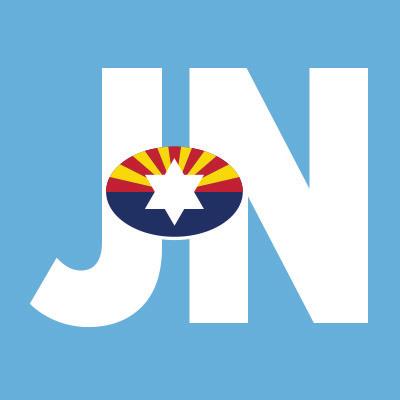
GENERAL MANAGER Rich Solomon | 602.639.5861 rsolomon@jewishaz.com


MANAGING EDITOR Shannon Levitt | 602.639.5855 slevitt@jewishaz.com
STAFF WRITER Nicole Raz | 602.872.9470 nraz@jewishaz.com
ADVERTISING SALES CONSULTANT

Jodi Lipson | 602.639.5866 jlipson@jewishaz.com
SUBSCRIPTIONS 602.870.9470 x 1 subscriptions@jewishaz.com
GRAPHIC DESIGNER Frank Wagner | 410.902.2300 ads_phoenixjn@midatlanticmedia.com
ADVERTISING: 11 a.m., Friday 3 days prior to publication
Jaime Roberts, Publisher | 2013-2016
Florence Newmark Eckstein, Publisher | 1981-2013
Cecil Newmark, Publisher | 1961-1981
Pearl Newmark, Editor | 1961-1981
M.B. Goldman, Jr., Founder | 1948-1961
PROUD MEMBER OF
the past to ensure it never happens again.”
Alexander White, a 97-year-old Holocaust survivor who lives in Scottsdale, testified in support of the bill and has been working alongside Beller, Hernandez and other groups to see it through. Its passage means “a great deal” to him.
“The Holocaust is a prototype of man’s inhumanity to man, and young people should know about that,” he said. “If it happens once, it can happen again.”
A national survey commissioned by the Conference on Jewish Material Claims Against Germany recently found that “when asked how many Jews were killed during the Holocaust, 63% of millennials (those aged 25-40) and Gen Z (1824) did not know 6 million Jews were murdered.” That figure was 67% in Arizona. The survey also found 11% of national respondents believe Jews caused the Holocaust, with 15% in Arizona.

Though the Holocaust education bill passed both chambers with broad support, the bill’s outlook was murky in the Senate. The Senate Republican Caucus describes the bill as deficient, saying it lacks “relevance to contemporary antisemitism” because it does not include a definition of antisemitism.





Sen. Paul Boyer (LD-20), who was one of the two opposing Senate votes, pushed to include an amendment that contains the International Holocaust Remembrance Alliance’s definition of antisemitism into the bill.
“Passing the bill without the IHRA definition would leave our legislative intent unfulfilled and vulnerable to exploitation,” he said in April.
IHRA defines antisemitism as “a
certain perception of Jews, which may be expressed as hatred toward Jews.
Rhetorical and physical manifestations of antisemitism are directed toward Jewish or non-Jewish individuals and/or their property, toward Jewish community institutions and religious facilities.” The definition is not legally binding and is
racism,” the caucus said in a statement Thursday, July 1.

But Hernandez, Beller and others argued that the inclusion of the IHRA definition threatened its bipartisan and interfaith support, since the bill also includes teaching about other genocides.
“The second that you make it about a specific religious group, then other groups want that representation as well,” Beller said in May.
The Senate Republican Caucus plans to pass a Holocaust education mandate with the IHRA definition in the next legislative session, according to its statement.
Boyer declined to comment.
Hernandez supports the IHRA definition but said she does not yet know her legislative priorities for next session. “I definitely would support the IHRA definition on its own.”
Sheryl Bronkesh, president of the Phoenix Holocaust Association, worked alongside Hernandez, Beller and the Jewish Community Relations Council of Greater Phoenix on the education bill.
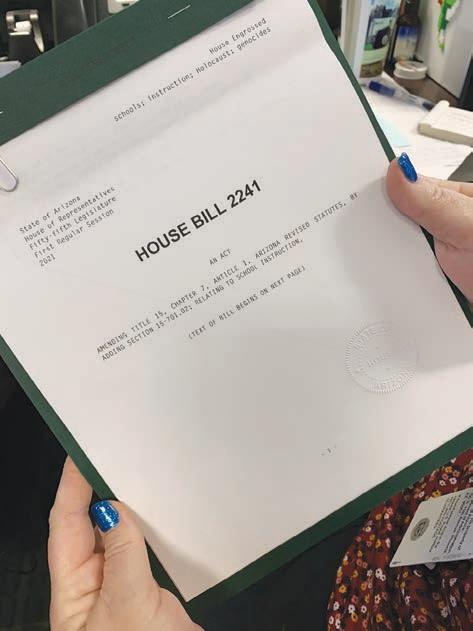
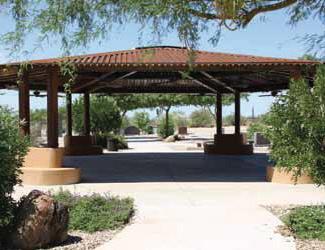
“I am so thrilled that at least some of the survivors who testify year after year could still be here,” she said. “In my mind, this bill’s in George Kalman’s memory and the memory of other survivors we’ve lost in the last year, and my parents.”
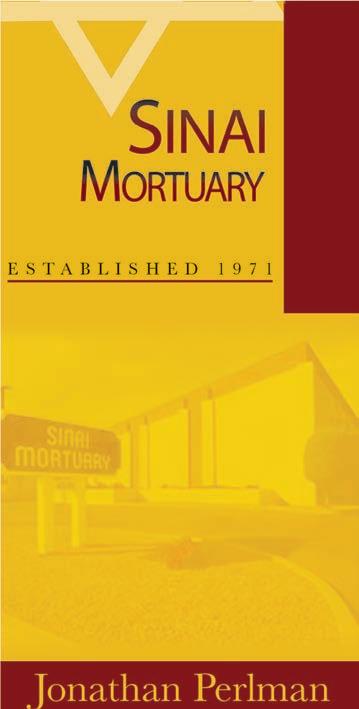
accompanied by a list of 11 examples of antisemitism to guide the application of the definition, including some forms of anti-Israel speech.
“The essential utility of the IHRA definition is that it clarifies the nature of stylized antisemitic rhetoric when it appears. It doesn’t prevent antisemitic speech, it merely highlights its bigoted nature for those who lack a proper understanding of this unique form of
Kalman, a Holocaust survivor who closely followed the bill, died May 25, waiting for the education bill to pass. Now that his work is done, Beller will wind down his organization, ATH.
“I saw an opportunity to move the mark and make a meaningful impact. So I’ll continue to look for that next thing where I can apply myself and hopefully unite stakeholders to make a meaningful difference in people’s lives.” JN
Jewish News received three awards for excellence in Jewish journalism last month from the American Jewish Press Association. The Rockower Awards were presented on June 24 for work published in 2020.
Managing Editor Shannon Levitt’s story “Seniors face brave new world of Zoom calls” received an award for excellence in writing about seniors. The article touched base with several seniors and caregivers to discuss both the pitfalls and opportunities of technology during COVID-19.
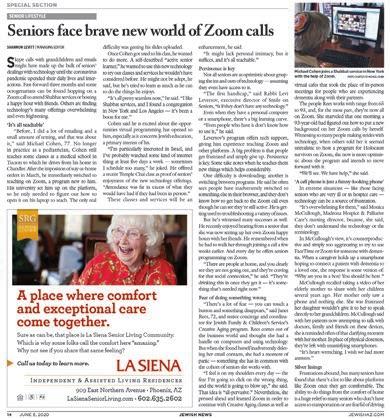
Levitt’s article “Rabbi Micah Caplan, 44, leaves legacy of compassion, friendship and love” won an award for excellence in news obituaries.
Former staff writer Ellen O’Brien won the Foundation for Ethnic Understanding’s award for excellence in interfaith relations for her story “Jewish, Christian and Muslim women come together around storytelling, community service.” The judges called the article empathetic and moving. JN

 NICOLE RAZ | STAFF WRITER
NICOLE RAZ | STAFF WRITER
Brothers Chris and Johnny Rice spent more time thinking about music than playing music last year.
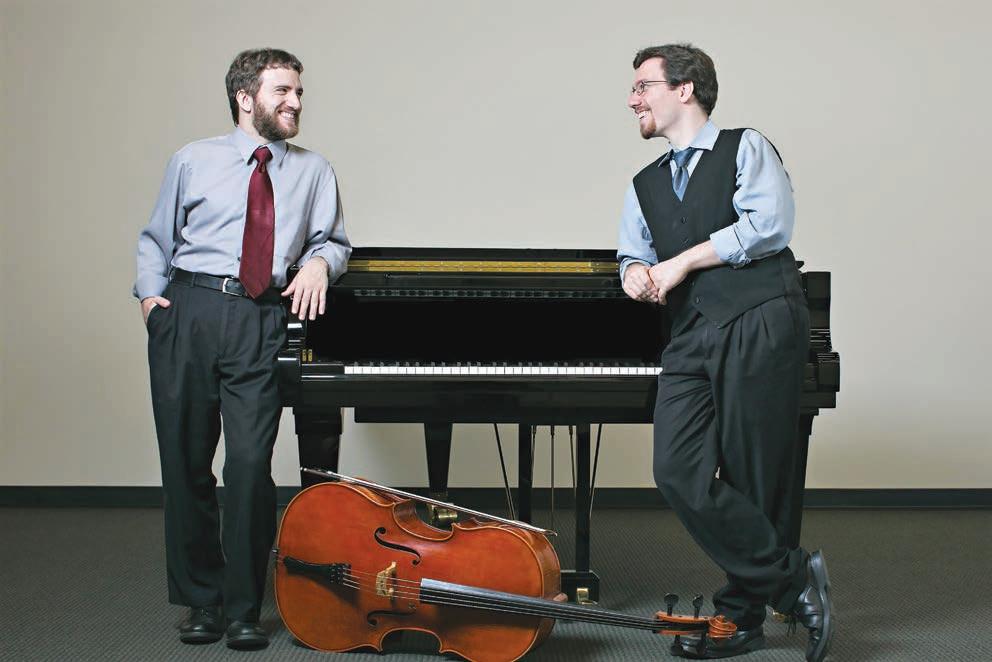
“Thirty years into performing music and to suddenly be performing less than I was when I was two was quite a shock to the system,” said Chris, who plays jazz, ragtime, classical and other styles with his brother on the piano and cello.
But things are looking up. The Rice Brothers will perform July 25 at the Arizona Jewish Historical Society — the society’s first in-person event since the COVID-19 pandemic began.
AZJHS has had a busy year with online programming, but virtual events just don’t have the same “personal touch,” said Lawrence Bell, AZJHS’ executive director. “I miss seeing all of our friends and members.”
Bell said a musical concert was the best choice for the society’s first in-person program because those have been the most negatively impacted by the move to online.
“For people that appreciate music, you really want to appreciate the sound and it doesn’t always translate online,” Bell said.
The Rice Brothers gave a few virtual performances during the pandemic. It was an odd feeling to perform for people all over the world while also performing for a quiet, largely empty room, Chris said.
“For me, music really is about connection between people and the ability to communicate and have this
shared experience of an elevating art form,” he said, and emphasized that virtual concerts make that a challenge.
Johnny said it will be “wonderful to play music for a live audience again,” and that the concert will almost feel like a celebration of a return to “a degree of normalcy.”
AZJHS’ summer concert series’ theme is exploring Jews and jazz, Bell said. The Rice Brothers can relate both personally and as artists.
Their dad is Jewish and their grandparents came to the United States from Poland before World War I. Over the past ten years or so, Chris said he and his brother have connected more

with their Jewish heritage.
“Knowing where we fit in within the story of history and knowing where our roots are has made a tremendous difference as people and as musicians as we approach the art that we are presenting,” Chris said.
He and his brother will perform some music composed by Jewish jazz composer George Gershwin, as well as works by Aaron Copland and David Popper.
Musical concerts at AZJHS would draw up to 200 people pre-pandemic, but Bell said space will be limited to around 100.
“We’re not in a post-COVID environment yet,” he said. The venue will follow the most current public health
guidance regarding social distancing, and people who are not vaccinated will be asked to wear a mask.
Diane and John Eckstein sponsored the AZJHS performance and will be attending.

“When we heard them for the first time four years ago at the Historical Society, we were just kind of blown away by their talent,” John said.
Immediately hooked and drawn to Chris and Johnny, the Ecksteins have sponsored a few of their performances since.
The music space is highly competitive and the Ecksteins want to see The Rice Brothers be as successful as they can be.
“If we don’t support these musicians and don’t go to any of their performances, they’re going to wither on the vine,” John said.
Diane said she is looking forward to enjoying the atmosphere of an in-person concert.
“I feel more connected to the music and the musicians when I experience a performance in person,” she said.
Chris said there is nothing like connecting with an audience, which is more important than ever coming out of a year filled with isolation.
The July 25 concert is an opportunity to remember how the arts and music can bring communities together, Chris said.
“I think everybody’s really hungry for connection and ready to reestablish,” he said. JN

When Sanford and Terry Cohen moved to Prescott in 1985, there wasn’t a lot going on in Jewish life.
“The entire Jewish community met in the living room of a house,” Sanford Cohen said. There were about 12 couples. “There was no actual synagogue or temple set up.”
The Prescott Jewish community has grown since then. There are two synagogues and several Israeli-owned companies, including one — CP Technologies — that hosted its grand opening ceremony June 9.
“The Israeli Arizona connection is getting stronger and stronger,” Cohen said, prompting him to decide that now is the time to get his wife’s and his long-envisioned initiative off the ground: The Arizona Israel Chamber of Commerce.
“The common knowledge that people have about Israel is so misinformed that we really felt as though there needed to be some sort of eyeopening avenue, where people can learn about the real Israel and not the one that is portrayed on the news,” Cohen said.
The Cohens plan to focus the chamber on cultural and economic exchange, including in the area of wine making.
To that end, he has spoken with some winemakers and Yavapai College, which has a robust

wine program, about the value of a potential learning opportunity with Israelis.
“Israel has done such a phenomenal job of developing a wine-making industry in a terrain and climate that is very similar to Arizona,” Cohen said. “I think Arizona winemakers have a lot to learn from the state of Israel.”
A 2017 study by the Alliance Bank Business Outreach Center and Northern Arizona University found the Arizona wine tourism industry creates an estimated $56.2 million in total economic output.
Paula Woolsey, vice president of the Verde Valley Wine Consortium and professor of wine at Yavapai College, said that footprint has most certainly grown since then, but current data is not available.
“Doing something with Israel would be awesome,” she said. “Talking about wine with people from different places around the world is a great way to bolster your own growth.”
The Cohens are looking at the areas of culinary arts, music and history, but they are open to shifting directions as things progress.

Ruth Ashkenazi joined the chamber as its business development officer the second week of June.
“This is a very serious grassroots effort to make sure that we’re building bridges,” Ashkenazi said. “Especially in this day and age, when there’s so much tension, we need all the
bridge building we can get.”
Cohen and Ruth said they have seen a lot of emphasis on recruiting support for Israel from Arizona. “We’re actually looking to create more support and stimulate some curiosity about Arizona from Israel,” said Cohen.
The Cohens have previous experience with local chambers of commerce. Terry Cohen was vice president of the Prescott Valley Chamber from 1987-1994 and Sanford Cohen was president of the chamber from 2001-2002 and was chairman of its board from 20172018. They’ve had the intention and vision for an Arizona Israel Chamber for several years, starting paperwork for the formation of a limited liability company in 2015. In 2016, they applied to the IRS for nonprofit status.
“We had hoped someday that we would do it after our radio career is over, but that doesn’t appear to be in the cards,” said Sanford Cohen, who founded and runs Arizona’s Hometown Radio Group with his wife.
Ashkenazi moved from California to Prescott late last year and happened to meet the Cohens shortly after. They hit it off, and talked about the vision for the chamber as a group.
“With the arrival of CP Technologies to Prescott, we all kind of got our heads together and said, ‘This just might be the springboard to get the Arizona Israel Chamber of Commerce off the ground.’ And so that’s what Ruth gen-
erously agreed to be appointed as the business development officer.”
Hillel Newman, Consul General of Israel to the Pacific Southwest of the United States, attended the opening of CP Technologies, where he met the Cohens and Ashkenazi.
Newman said he welcomes the creation of the Arizona Israel Chamber.
It will be the third organization dedicated to “economic relations,” he said, referencing the Arizona Israel Technology Alliance, dedicated to increasing and supporting trade, and the Arizona-Israel Trade and Investment Office in Israel.
Leib Bolel, president and CEO of the Arizona Israel Technology Alliance, said the new chamber has potential.
“With its focus on culture, arts and beyond, there is a large opportunity beyond just technology that the state of Arizona and Israel both share and can benefit from one another,” Bolel said.
Chabad of Prescott Rabbi Elie Filler said he’s seen tremendous growth in the Jewish community in the six years since he’s been in Prescott, and it’s been a source of pride for the town to host the Israeli-owned companies. It would be nice to have more Israelis come to Prescott to visit, he said. He thinks they will be pleasantly surprised to find Judaism in the small city south of the Bradshaw Mountains. JN

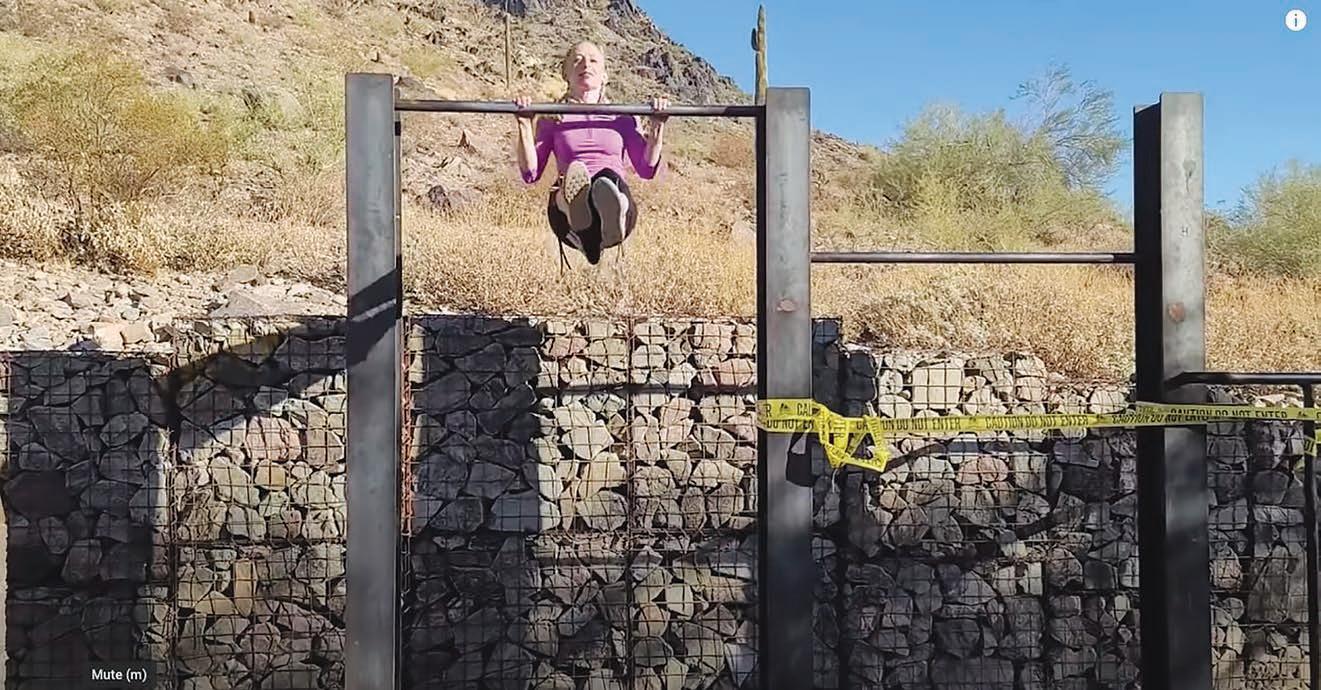 NICOLE RAZ | STAFF WRITER
NICOLE RAZ | STAFF WRITER
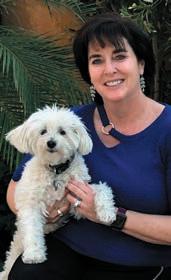
Liba Yoffe grew up watching “American Ninja Warrior” on TV, but she never thought she’d be on the show — and, certainly not as the show’s apparently first Orthodox Jewish woman.
As a viewer, she enjoyed seeing the jawdropping feats of strength. She marveled at how competitors would conquer obstacles like the “shrinking steps,” in which an athlete must run across five steps that lower upon impact, or the “spinning log,” which resembles a moving balance beam.
“Also, every Ninja has a story, which I realized even more when I was on the show,” said Yoffe, 35, who lives in Phoenix. “Everybody who is there — you’re there because you’re an athlete — but you also have a story; so you’re with a group of really amazing people.”
Yoffe’s own story is one of perseverance.
Exercise was always Yoffe’s outlet. As a teenager, she would ride her bike five miles to school and back; she would roller blade, play basketball, swim, climb on whatever she could find — “anything active, I was there.”
But she never had exposure to fitness competitions. “I always felt like I was missing out,” she said. “I felt like, ‘If only I could go to public school, because then I would be able to compete and be on a team.’”
As a young woman, she suppressed her interest in sports and fitness because she felt some shame in wanting to be labeled as “a strong girl” as opposed to “a pretty girl.”
“The more religious world doesn’t understand how valuable it (strength) is to a girl’s self-confidence. And so they don’t put enough emphasis on it,” she said.
When Yoffe started power lifting, she realized just how strong she actually was and loved the way she felt. “I stopped caring about any of the other stuff.”
She described herself as “super competitive,” and two years ago began
pursuing opportunities to enroll in national power-lifting competitions. But ultimately, she did not pursue that goal, because she was not allowed to compete while wearing a skirt, which she felt compromised her values.
A Jewish athlete who knew about Yoffe and her unique story reached out to her and encouraged her to look into the sport of Ninja as another avenue of competition, which would likely be more amenable to her religious needs.
“I was like, ‘I’m up for the challenge,’” she said. “I walked into a Ninja gym and it was such a different type of sport, because there are no rules — just don’t fall.”
She began training and got the whole family involved.
Her husband built a Ninja course in the backyard, and her four kids — a 12-year-olddaughter and three sons, ages 10, 7 and 4 — are just as excited about “American Ninja Warrior” as she is.
Her kids even participated in her audition video for the show, with her daughter, Tehila, kicking things off with, “Hey, Ninja people, introducing my mom.”
And Yoffe lets the audience know right away how important her religious identity is.
“I love my religion, I love my culture, but there’s something missing. It needs to be normalized to do sports, to be into athletics,” Yoffe said in her audition video. “I want to show the leaders of our communities that girls and women should be able to do sports while maintaining their faith.”
Her daughter was diagnosed with alopecia when she was 2, causing her to lose all of her hair.

“I knew at that point that if I personally didn’t become extremely self-confident from within myself, there was no way that I would be able to raise a confident daughter,” she said in the video.
Yoffe was faced with a unique challenge right away when filming for the current season occurred during Passover. It took place in Tacoma, Washington, and the whole family went with her.

“It was definitely not easy,” she said. “Any of the food they gave us, we couldn’t have.”
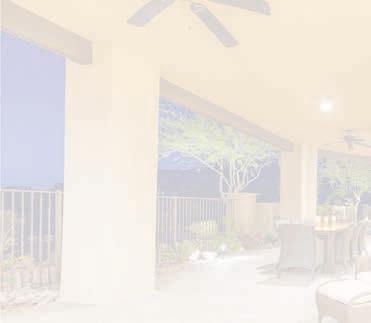
But the show went out of its way to offer her flexibility in her travel schedule during Passover, she said.
A spokesman for “American Ninja Warrior” did not respond to a

running her business, Spirit Fit Life, which is dedicated to helping women find their strength from the inside out.


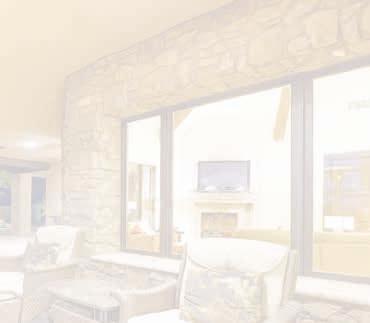
Jews going into their morning prayers and Torah class Monday, June 7, at Chabad of River in Tucson were met with a vandalized entrance.
A swastika and antisemitic slurs were spray-painted on the door.
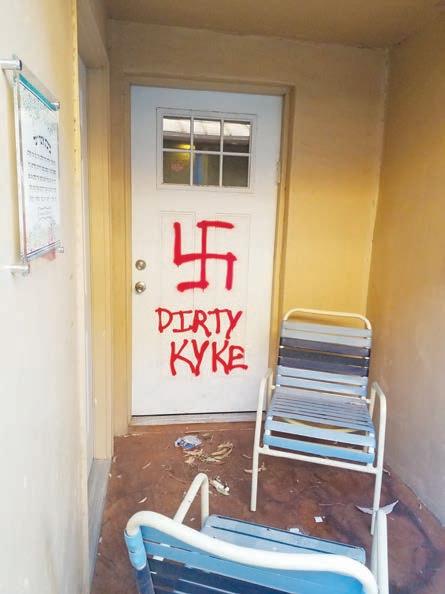
On June 24, 30-year-old Nathan Beaver was identified as the suspect and charged with aggravated criminal damage and booked into the Pima County Jail.
Tucson Police Chief Chris Magnus said the investigation was exhaustive.
“We have continually expressed we have no tolerance for crimes based on hate or targeted towards places of worship,” he said in a statement.
Rabbi Rami Bigelman, Chabad on River’s center director, said the vandalism was “very disturbing” and raised safety concerns. He said on June 7, the building did not have a security system and will immediately install one. The act of hate will not deter his work, he said, and he will increase the services the center provides.

Rabbi Yehuda Ceitlin, outreach director for Chabad of Tucson, said he appreciated the messages of support and community coming in from Tucson and around the world.
The antisemitic incident does not reflect the Tucson he knows, he said.
“Bigotry is really a symptom of a problem — it’s when people lose touch with their purpose to make the world a better place,” he said.
Ceitlin believes the expression of antisemitism fits in with a broader trend following the recent violence between Israel and Hamas in the Middle East. During
nearly two weeks of fighting, the AntiDefamation League tracked a 75% spike in antisemitic incidents in the United States, including assaults, vandalism, harassment and hate speech.
“While this is a terrible hate crime, it is not surprising in light of the increase in antisemitism we have seen here in Arizona and across the country,” said Tammy Gillies, ADL’s regional director in Arizona. “ADL is working with law-enforcement on this despicable crime.”
The morning the vandalism was discovered, Tucson Rep. Alma Hernandez
Tucson’s mayor, Regina Romero, tweeted, “This is an absolutely disgusting display of hate and antisemitism. This will not be tolerated in our diverse and welcoming city. I ask all Tucsonans to join me in standing up and raising awareness on antisemitism in all of its forms.”
Chicanos Por La Causa issued the following statement in support of the Jewish community: “Incidents of hate harm us all. As an organization with a presence in Tucson and Southern Arizona, we condemn this attack at Chabad on River. We believe all houses of worship should be respected and free of hateful incidents.”
The attack came just weeks after a rock was thrown through a window in the front door of Tucson’s Congregation Chaverim.
On June 17, more than 60 professional and faith leaders from diverse backgrounds came together to form a coalition to combat hate and antisemitism in southern Arizona.
(LD-3) tweeted, “When it happens to one, it happens to all of us. The amount of Jewish hate isn’t shocking. The silence is.”
Gov. Doug Ducey tweeted that antisemitism has no place in Arizona and this behavior cannot be tolerated. “We are ensuring the authorities are aware of this hateful act. Those responsible must be held accountable. Arizona stands with those of the Jewish faith.”
Graham Hoffman, president and CEO of Jewish Federation and Jewish Community Foundation of Southern Arizona, called on “fellow Tucsonans” to stand with the Jewish community in combating “heinous acts of intimidation, hatred and antisemitism.”
“We commit today to create a coalition to build relationships, challenge stereotypes and cultivate understanding and mutual respect,” the group stated.
Following the arrest, Romero expressed relief and gratitude.
“I know this incident was deeply troubling to our entire community,” she said. “I appreciate the dedicated work of our police department’s officers and detectives to identify and apprehend the suspect.”
A survey by Pew Research Center released in May found that 53% of American Jews say they personally feel less safe than they did five years ago. JN

BIGOTRY IS REALLY A SYMPTOM OF A PROBLEM — IT'S WHEN PEOPLE LOSE TOUCH WITH THEIR PURPOSE TO MAKE THE WORLD A BETTER PLACE.
If not for his wife, Larry Cohen probably wouldn’t participate in Jewish life much, if at all. But Cindi Cohen, who isn’t Jewish, was adamant about prioritizing Judaism in their lives from the get-go. She incorporated Jewish elements in their wedding, raised a Jewish child and became an active member in Temple Solel. After pushing her husband to be more active, he’s now on the synagogue’s board.
Cindi Cohen might not identify as Jewish, but she’s the driving force behind her Jewish home.
Yet, stories like hers aren’t necessarily part of May’s “Jewish Americans in 2020” survey by the Pew Research Center. While Pew did ask “people of Jewish affinity” about matters of belonging, continuity and engagement with the Jewish community, if respondents didn’t claim to be exclusively Jewish by religion, weren’t raised as Jewish or didn’t have a Jewish parent, they were not included in the report on the survey’s findings.
According to Becka A. Alper, Pew senior researcher, the survey “applied a narrower definition of Jewishness” for its analysis. “We don’t define people as Jewish if they don’t say they are Jewish,” she said, via email.
And despite leading Jewish lives and raising Jewish children, some in interfaith marriages hesitate from identifying as Jewish, instead saying the issue is more complicated and personal.
It’s unfortunate that these people, who are often “part of the lifeblood of Jewish institutions,” but don’t identify as Jewish, aren’t showing up in the data, said Jodi Bromberg, CEO of 18Doors, an organization whose stated mission is to empower interfaith couples in their exploration of Jewish life.
Bromberg is more interested in how “folks find connection and meaning in Jewish life,” rather than whether they identify as Jewish. Researchers should be asking: “Why do you feel connected to Jewish life and community and how does that play out?”
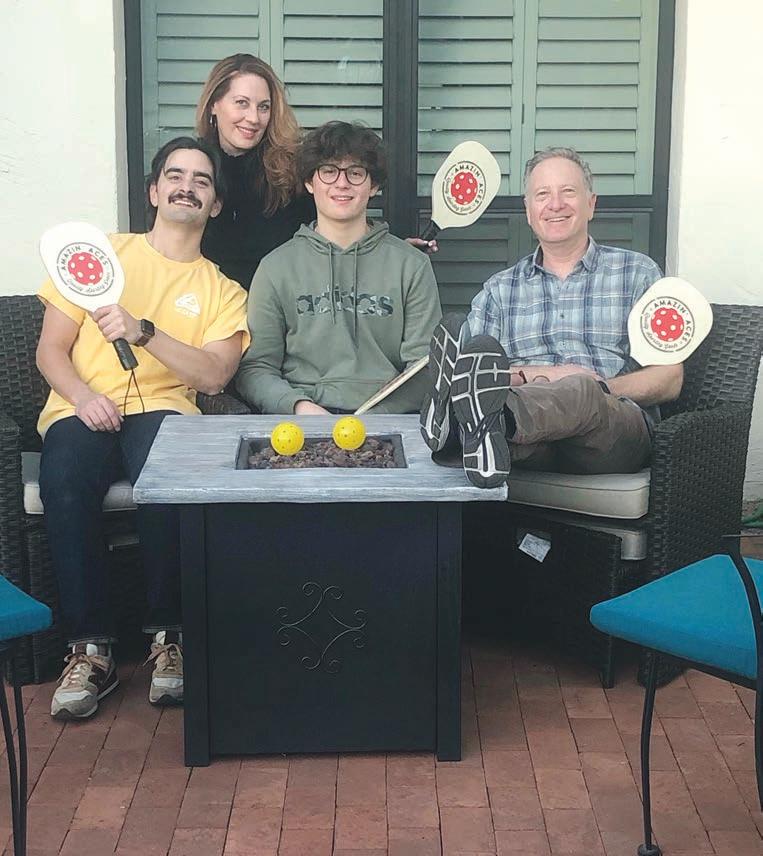
A binary understanding of Jewish identity — one is Jewish or one is not — is too limited when it comes to exploring something as fluid as identity, said Keren McGinity, professor at Brandeis University and author of two books on the topic of interfaith marriage.
Surveys can only tell “a teeny part of the story,” she said. “Jewish life and identity are dynamic and they change and it stands to reason that the questions we ask also need to change.” She, too, is more interested in how people “identify Jewishly.”
It’s something Cindi Cohen has spent
some time considering. Though she was never asked the question in a formal survey, she knows how she would have answered if asked which religion she practices. And her answer would be unequivocal: Judaism.
If asked directly if she is a Jew, however, her answer would be no. She wouldn’t identify as Jewish “out of respect” for and so as not to offend Solel’s older congregants.
Yet, she “feels Jewish,” and most people assume she is. When fellow congregants or parents of her children discover that she’s not Jewish, they’re shocked, she said. She sometimes wonders if those people feel differently towards her once they know.
But her first son, who was 5 years old when she married Larry, isn’t as reticent when it comes to his identity. Even
though he never formally converted, Judaism is the only religion he has ever known, and if asked, he would say he is a Jew, Cohen said.
Though Cohen flirts with the idea of one day converting, since she’s already “super involved,” she’s not sure she should have to.
Temple Chai member Elizabeth Keith understands Cohen’s hesitance on that score.
She is also married to someone who didn’t convert and doesn’t identify as Jewish, but claims Temple Chai Rabbi Mari Chernow as his “rabbi and spiritual leader;” she’s the one he turns to in a crisis.
“It doesn’t preclude you from being part of the Jewish community if you don’t convert,” Keith said.
That idea also resonates with Temple
Kol Ami Rabbi Jeremy Schneider. He likes to look at “the bigger picture” when it comes to interfaith marriage.
“I don’t believe in labeling anybody as ‘you’re a Jew; you’re not a Jew.’ Everyone who chooses to cast their lot with Kol Ami is choosing to be part of a Jewish home,” he said.
Even so, Brian Hummell, who attends TKA, feels some distinction is necessary. He is from Salina, Kansas, grew up Catholic and his early exposure to Judaism was limited. When he married a Jewish woman, his mother had to ask what it means to be Jewish.
“You can’t fight love,” Hummell said. But there was never a question in his mind that he would convert. He still believes in Catholicism’s story. “I can’t turn that off,” he said, though he acknowledged it would be easier for his family if he did convert.
He feels completely embraced by TKA, and he was happy to raise his children as Jews, saying they are best served there, a place he’s never felt ostracized as a non-Jew.
He feels no barrier to belonging nor to participating in services. There’s a moment every year during High Holidays when Schneider brings interfaith families to the bimah for a special blessing. Hummell said he “gets misty” just talking about it.
But he still lets people know he’s not Jewish, although he celebrates Jewish holidays and his children are Jews. It’s a line he doesn’t want to cross, he said.
Chris Rogers, another TKA member, grew up in the Church of Latter Day Saints. But when he married Jen, a Jewish woman, he was prepared, even happy, to help raise their children as Jews.
“My faith prioritized family and some form of spirituality above all,” he said. “It was important to give kids community and religious education, but denomination wasn’t important.”
Still, he said he’s only “Jewish by marriage.” Identifying as a Jew would be a bridge too far, in part, because his own religious heritage is one that was persecuted. “I don’t think it would honor my ancestors to turn my back on them,” he said.
But he doesn’t feel the need to fall into an either/or way of thinking about his identity.
“Life is stressful enough without dealing with those kinds of false lines,” he said.
Cohen said the topic of Jewish identity comes up sometimes in conversation with other interfaith couples, and they all feel pretty much the same. For better or worse, “it’s up to official Jews to say if people like us are Jewish,” she said. JN
“I DON’T BELIEVE IN LABELING ANYBODY AS ‘YOU’RE A JEW; YOU’RE NOT A JEW.’ EVERYONE WHO CHOOSES TO CAST THEIR LOT WITH KOL AMI IS CHOOSING TO BE PART OF A JEWISH HOME.”
Rabbi Jeremy Schneider alerted Temple Kol Ami members on June 13, that there would be a change of plans. Cantor Rita Glassman, who was hired as interim cantor in mid-April, would not be coming after all.
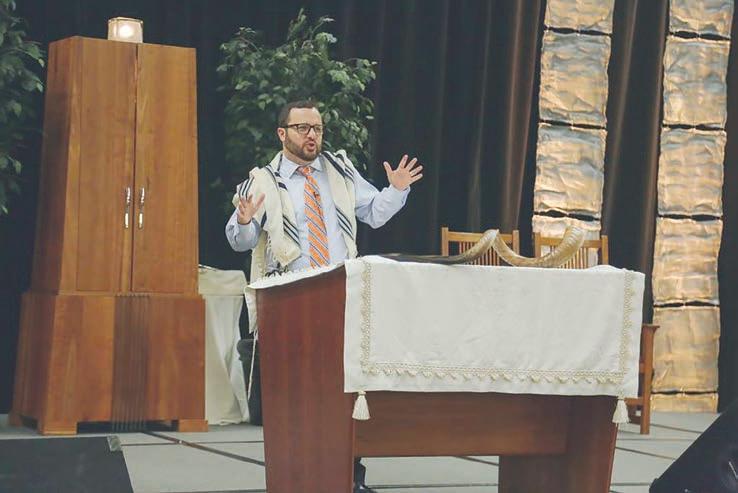
Glassman backed out of her contract due to personal reasons, although she had already signed an agreement, and Schneider accepted her resignation.
Glassman was to be the second cantor in the synagogue’s history.
“I’m disappointed that things didn’t work out with Cantor Glassman and I respect her decision,” Schneider told Jewish News. “Our congregation will rally together to support me and to support each other, and I am super excited to go into the placement process this fall for an ordained cantor.”
In a video message to his congregation, Schneider alluded to the Yiddish expression, “man plans and God laughs,” and said that while the resignation “has certainly caused us to change our plans, we are taking another path.” He goes on to reassure viewers that despite the unexpected change, the synagogue will not suffer.
TKA turned to Susan Colin to be its parttime interim cantorial soloist for Shabbat services, b’nai mitzvah and High Holidays when Glassman resigned. Colin signed a contract June 9, and started at July 2’s Shabbat service.
“I’m very optimistic about the year ahead with Susan,” Schneider said. “Her proven talent will help us tremendously.”
The clergy hiring season opens after the High Holidays, and is “sort of like free agency,” running from November to February, Schneider explained. TKA was late to the process last year, he said, but this time the synagogue is going in at the beginning of the process, giving it an advantage.
Schneider said that although things didn’t
go as planned, TKA ultimately had to assess the congregation’s needs, and the conclusion is still the same: He needs another ordained clergy member “to serve the congregation’s needs and programs and give me the support I need to serve 400 families.”
Until then, Colin will help the synagogue in her role as interim soloist.
Colin is happy about how things worked out. “This was a really surprising turn of events that landed positively for me. It’s a really neat opportunity to stay in the community and be part of something for a year,” she said.
In March, she left her position as cantorial soloist for Congregation NefeshSoul in Chandler to work solely as a visiting guest artist and artist in residence for various synagogues.
“Plans are possibilities,” she said, putting a positive spin on the Yiddish expression. Her part-time schedule at TKA will allow her to go forward with the other gigs she had already lined up, making it all feel very natural, she said.
Colin has always made it a practice to attend services at different places, and she is somewhat familiar with TKA and has met Schneider at various functions. Her impression is that it will be a fairly smooth fit for both her and the congregation as she reviews the way the synagogue does services, as well as its existing musical repertoire. Since she is only handling the music, she said it will be an “easy plug and play,” although it will take a few weeks to find her groove and for congregants to get used to a new sound.
But her main intention is to do everything she can to help TKA’s immediate needs while they search for a permanent cantor.
In addition to Colin, TKA will rely on Rabbi Dani Eskow, the owner and operator of onlinejewishlearning.com, to assist with tutoring b’nai mitzvah students. JN
IS SEEKING THE FOLLOWING TALENT IN PHOENIX, AZ:
MANAGER, CAE CRASH SAFETY:
Build CAE Crash Safety models & manage CAE team. Req’s Bachelors degree in Mech., Industr., Manuf., Structural Eng., or related w/5 yrs exp in dynamic analysis using ABAQUS or LS-Dyna, crash safety. Travel req’d.
SENIOR ENGINEERING CHANGE ANALYST:
Work in enovia 3DX/PLM tool, engineering change. Req’s Bachelors degree in Mech., Industr., Manuf., Structural Eng., or related w/5 yrs exp as Eng Change Analyst or work w/pdm/plm apps.
SR. MECHANICAL DESIGN ENGINEER, CAB:
Design, release, launch soft trim/hard trim/NVH comps.
Req’s Masters degree in Mech., Industr., Auto., Structural Eng., or related w/1 yr exp in truck/auto product dev.
SUPPLIER QUALITY MANAGER:
Lead Supplier Quality Engs, create Manual, own life cycle. Req’s Bachelors degree in Mech., Elect., Auto., or closely related w/5 yrs exp in auto industry/team leader/manager. Travel req’d.
PURCHASING MANAGER:
Lead rfp process for sourcing, costing of battery pack, circuit board, hv electronics. Req’s MBA, masters in Economics., or closely related w/1 yr exp sourcing and commodities. Travel req’d.
BODY ENGINEERING MANAGER:
Develop vehicle designs for manufact., develop welding/manufact process. Req’s Bachelors Mech., Electric., Industr., Auto., or closely related w/5 yrs exp CAD, auto welding process. Travel req’d.
CAE ENGINEER, CRASH SAFETY:
Build CAE Crash/Structural models & analyze CAE results. Req’s Masters degree in Mech. Eng., or related w/1 yr exp meshing tools for FE model dev & FEA. Travel req’d
LEAD ENGINEER, CAE:
Use CAE tools to ensure safety & durability of truck; build crash & structural nite models. Req’s Master’s Mech, Aerospace Eng or related. 2 yrs exp commercial meshing tools for FE model dev. Travel req’d
SEND TECHNICAL RESUME TO ATTN:
HR, NIKOLA MOTOR CO., 4141 E BROADWAY ROAD, PHOENIX, AZ 85040
4:00PM-5:00PM





When Princeton University announced last fall that it was not ready to let students return to campus, Jacob Miller, 20, decided it was time for a different type of learning experience. He took a leave of absence from Princeton, determined to be living in Israel by January 2021.
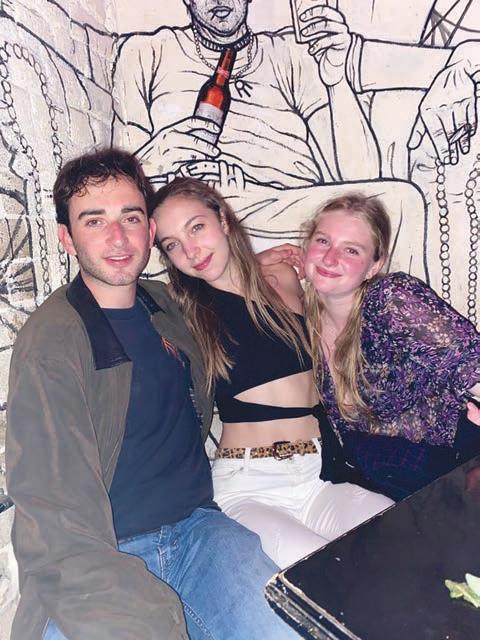

As a Jewish kid from Paradise Valley, he had visited the country often. But this time he wanted to experience it more like an Israeli and less like a tourist. Signing on with Masa Israel Journey, an immersive and long-term educational program for people ages 18-30, would allow him that privilege.
5:00PM-6:00PM
Throughout the pandemic, Masa never closed its operations. The organization prides itself on offering young people an “authentic, unmediated and challenging journey into Israeli society, culture, politics and history,” according to its website. Since being founded in 2004 by the government of Israel and The Jewish Agency, it has brought 160,000 people to Israel from more than 60 countries. It assists participants financially and logistically depending on individual need and experience.
In March, Masa held its largest career networking virtual event, which allowed interested young people the chance to learn about resume writing, industry networking possibilities and what it’s like to work in Israel.
“Masa career programs are an increasingly viable option for young adults looking to elevate their opportunities for professional growth. We’ve seen a 33% increase in participants year over year, with an 85% surge in participants from North America alone,” said Ofer Gutman, Masa’s acting CEO.
Miller, who is taking advantage of one of Masa’s career programs, signed up with two of his friends last fall. Yet, COVID-19 interrupted his plans as cases spiked at the same time he was scheduled to leave; Israel went into lockdown and Miller wasn’t able to go. It wasn’t until April 5 that he was finally allowed into the country.
Now he’s living in Tel Aviv and working 35 hours per week for a small venture capital firm as an unpaid intern. Miller explained that in Israel, interns get a lot of autonomy and responsibility and are an integral part of the business team. He also takes Hebrew once a week following a more intensive course he took upon arrival.
Yaffa Alush, 19, also arrived in Israel in April. But she is having a very different experience than Miller. She volun-

teers and lives on Kibbutz Harduf, where she spends much of her time volunteering with people with special needs. Together they work with horses, the garden and any task that needs to be done. She also travels twice weekly to surrounding villages to teach English to schoolchildren.
Alush graduated from The New School for the Arts and Academics in Tempe in the spring of 2020, and a friend referred her to Masa when she decided to take a gap year. Her original plan was to spend four months on the kibbutz, but now she is debating whether to make aliyah and attend college in Israel rather than return to Arizona for school.
For now, she is happy just to be in a place she can help people. “I knew wherever I would go, I would want to volunteer,” she said. And she likes that Masa offers so many options for people looking to live in Israel.
“They help so much with money and finding the perfect thing for you,” she said. “Living on this kibbutz is the most amazing thing I’ve ever done and Masa found it for me and made the process simple.”
Alush only visited Israel once before. Now, she’s struck by the diversity of people, languages and cultures. “There are so many new things to learn to expand my knowledge, and I just love it so much,” she said. “I’m constantly experiencing the diversity — it just keeps happening.”
She grew up in an Orthodox household and before transferring to a high school in Tempe, attended Shearim Torah High School for Girls in Phoenix. Although she’s “not so Orthodox anymore,” she said it’s still amazing to see “different types of Jews mixing everywhere you go in Israel.”
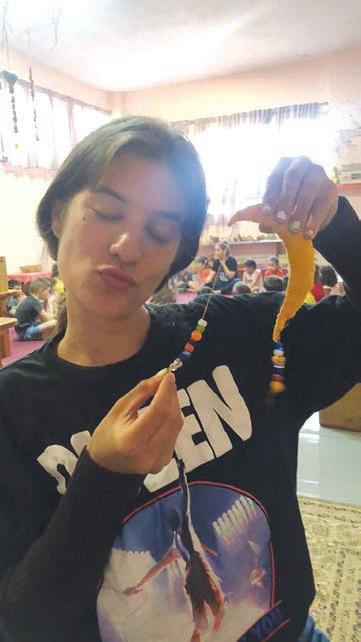
Alush and Miller were both in Israel during its recent war with Gaza. Masa offered emotional support programming to all its participants in the country, as well as access to shelters and safe spaces.
Alush was far from the fighting and heard only one siren from a nearby city. She felt safe, but was worried for her friends who had family in more at-risk locations.
But she was somewhat prepared for possible conflict before she came. “There’s so many people against each other,” she said. “Coming here, I knew it could happen.”
Miller, on the other hand, was at a protest against the Sheikh Jarrah evictions with Israeli friends in Tel Aviv when the rockets started coming down.
“We saw the rockets and went to the bomb shelter,” he said. He felt calm and safe in the shelters. He had been in Israel before during conflict, and although his parents were concerned, he never considered leaving.
He felt more disturbed reading the news and seeing antisemitism online, as well as witnessing the internal violence between Jews and Palestinians in Israel’s mixed cities, like Lod.



“It’s a very complicated situation with a lot of political motivations and it was disturbing watching it get escalated by both sides,” he said.
A lot of people checked in on him during the conflict to make sure he was OK. “More people texted me during that time than ever before in my life,” he said. JN


The Jewish Community Foundation of Greater Phoenix awarded $141,000 in scholarships for children hoping to attend Jewish day and sleep-away camps this summer. The need-based scholarships were granted to 108 families with children at 41 different camps throughout the United States and Canada.
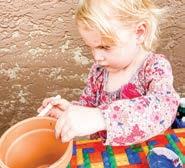
Sheryl Quen, JCF director of grants and communications, highlighted the idea that a Jewish summer camp can help build a Jewish identity and create a sense of belonging.

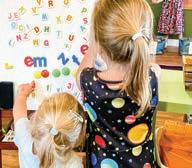

“By providing camp scholarships we have the opportunity to fund lifelong friendships, Jewish learning, new adventures, sheer joy and a connection to the Jewish community,” Quen said, via email.
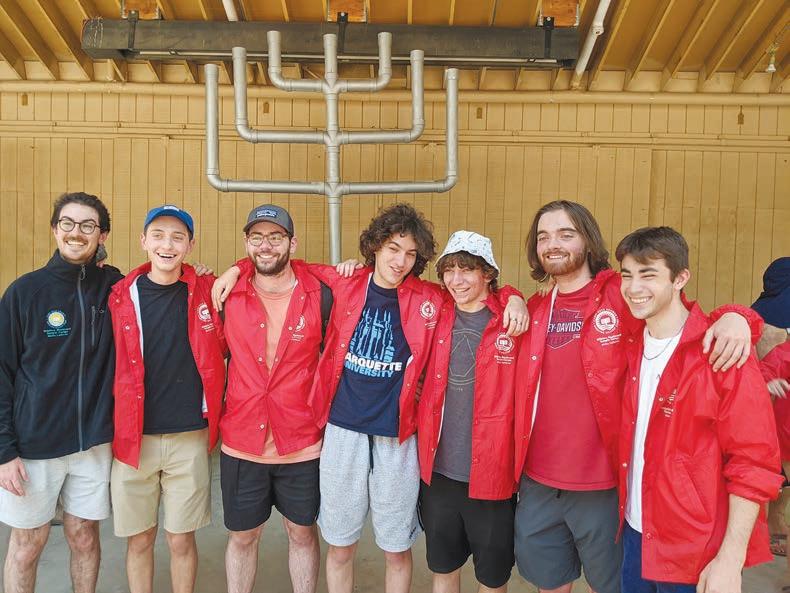


Andrea Cohen, JCF director of youth philanthropy, pointed out that COVID created new challenges for families and said that due to these new financial pressures, “the need for assistance
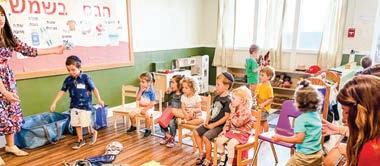
Conservative and Orthodox camps. They included several camps in Arizona: Camp G.R.O.W. of Arizona, Camp Daisy and Harry Stein, Gan Israel and Martin Pear Jewish Community Center’s Shemesh Camp.
There were also scholarships to camps in California: Camp Agudath West, Camp Mountain Chai, Camp Ramah Northern California, Camp Ramah Ojai, Maccabi Sports Camp, URJ 6 Points Academy, URJ Camp Newman, Camp Hess Kramer, Gindling Hilltop Camp and Yeshiva HaKayitz.


“It is one of the most gratifying things we do, knowing the difference Jewish camping can make in the lives of these children,” stated Richard Kasper, JCF’s president and chief executive officer.
The scholarships were made possible by endowment funds established at the JCF by Jack Bromfield; the families of Gloria and Sidney Kasper, Jean and Harold Grossman, Labe Eric Targovnik and Kenneth Maltenfort; JCF’s donors;

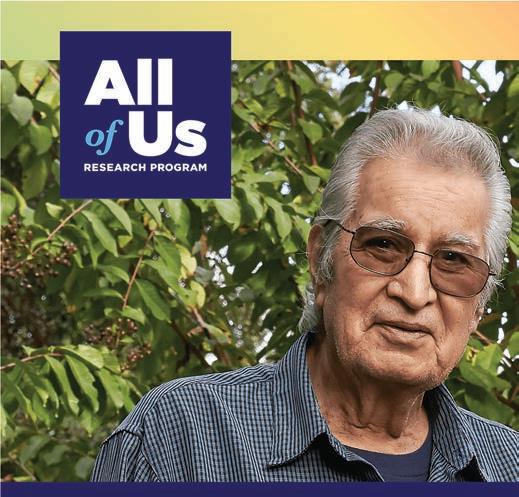
Frest. After finishing her junior year at Northern Arizona University, where she was recognized for her work in the honors college, awarded scholarships and selected for a place in STARS College — an organization for students pursuing careers in student affairs — Krell traded in the cool mountain air of Flagstaff for the heat and humidity of Conway, Arkansas and a challenging internship.
At the University of Central Arkansas she supervises a staff of five and works on logistics for conferences and camps being held on campus. Her team will also create diversity plans for the school year, write curriculum for residence hall programs and assist with a sexual assault awareness carnival.

“It’s a tradition here,” Krell explained. “There are games that create a carnival vibe while trying to educate people about sexual assault. They hope to incorporate the understanding of what sexual assault means — in a fun way. The last one was apparently not much fun, which is why they brought us in. We are creating activities that teach about consent.”
And living in the South for the first time, she’s having a bit of a fish-out-ofwater experience. As the former president of Hillel at NAU, Krell was comfortable being visibly Jewish on campus. But in a part of the country that feels more overtly Christian, she’s hesitant to draw attention to her Jewish identity.
“It’s the first time I’ve felt my minority status. In Phoenix, I was always very involved in Jewish stuff. I haven’t been this disconnected from the Jewish community for a while,” said Krell. “I’m looking into going to Havdalah services here, so we’ll see how that goes.”
Krell talked to Jewish News about her future plans, the importance of Jewish community and being an LGBT ally under difficult circumstances.
What’s Arkansas like? Are you experiencing some culture shock?
I’ve been in Arkansas for a while, and it’s mostly great — minus the humidity. I haven’t really seen a lot of the general Arkansas community because my focus is the campus, which is pretty diverse and inclusive.
But in the larger community things are pretty Christian-focused, so I don’t really share the fact that I’m Jewish with many other people. My staff knows, but the larger community doesn’t feel super-accepting.
Do you think that arriving in the midst of heightened concerns over Mideast violence made it harder?
I came to Conway in the middle of all of it so I had conversations both here and at NAU. In higher ed, people’s opinions about Israel are so varied and focused on inclusivity. But even though at NAU the public
I’m a summer camps and conferences coordinator. I co-supervise a group of five assistants and as a team we’re responsible for preparing residence halls for camp groups and conferences to spend the summer here. It’s all about the logistics.
My staff is my age and it’s a little weird — I was hesitant to apply, but they said I was qualified. I’m trying
with people is really important to me and it’s one of the big reasons I want to live on the East Coast.
At NAU, that’s what Hillel was for me. Back when Hillel was in person, I could rely on them. I felt close to the members — it’s like a family.
For me, Judaism is changing constantly — as well as my relationship to it. JN
The enormity of the tragic loss of lives and property in the haunting collapse of the 13-story Champlain Towers South condominium in Surfside, Florida, continues to grow. Close to 150 people are dead or missing, notwithstanding a herculean rescue effort. Earlier this week, with Tropical Storm Elsa approaching, demolition crews brought down what was left of the hobbled building.
The population of Surfside is a reflection of the cultural, economic and religious intermixture of the Miami area. There is a large Jewish population in Surfside, as there was in the collapsed tower, made up of immigrants, snowbirds, retirees and vacationers. Many were Orthodox, drawn to the neighborhood by a thriving Chabad synagogue and a wide array of kosher eateries, all within a few short blocks.
There was a special energy to the Surfside community that came crashing down with the Champlain Towers building. And it is becoming increasingly clear that the tragedy could have been avoided.
Indeed, based upon a stream of almost daily investigative reports in local and national publications, there appear to have been several warnings of structural decay problems at the building, and an all-too-familiar debate between condo-
confirmed the problems. An alarming summary was issued to unit owners by the former association president just two months ago, warning that: “The concrete deterioration is accelerating….
When you can visually see the concrete
gave owners pause. And the price kept rising — from a projected $9 million following the initial inspection, to a whopping $15 million, astronomical when you consider that the association only had $800,000 in reserves. The repairs were finally approved a short while ago, but they never got started.
And now the worst has happened. We mourn the tragic loss of lives. But the management dilemma of aging infrastructure, sky-high maintenance and repair bills, and the challenge of finding money to fix the growing problems is not unique. Local governments and condominium associations in every city face precisely the same issues every day.
minium owners and their homeowners’ association over whether, when and at what cost repair work should be done.
A 2018 analysis of the building found major structural damage and warned of further deterioration. More recent reports
spalling (cracking), that means that the rebar holding it together is rusting and deteriorating beneath the surface.”
Obviously no one wanted the Champlain Towers South building to collapse, but the price of projected repairs
We need to learn a lesson from Champlain Towers. We cannot allow any aspect of our nation’s infrastructure to deteriorate and fail. Even if there is a steep price to pay for maintenance and repair, that is a worthwhile and necessary investment. Just ask any family member of a beloved soul lost in the Champlain Towers collapse. JN
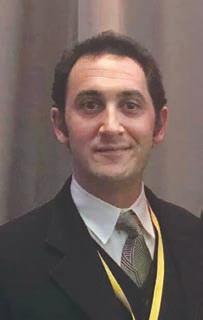
n light of the recent uptick of antisemitism, and the two vandalism attacks on synagogues in Tucson, the Jewish Community Relations Council has been working behind-the-scenes to help the Jewish community attain support to be more secure in this time of crisis — and it has been using public diplomacy to help do so.
Public diplomacy is how countries and communities communicate policies, culture and values. It is a practice that understands audiences don’t react to rational information, but rather emotional, transrational connections — especially in the form of advocacy through the sharing of narratives.
Following the attacks on Congregation Chaverim and Chabad on River, the JCRC used its network of relationships to coordinate responses and rally support
Ifor the Tucson Jewish community from law enforcement, Jewish organizations, local elected officials and different faith and ethnic communities.
One might ask: Why don’t non-Jewish faith and community groups simply help out without prompting? Why do we need to get their attention?
One simple reason is that other communities are not hyper-focused on the type of discrimination and intimidation faced by the Jews.
In massively tragic — and high-profile — events like the shooting at the Pittsburgh Tree of Life synagogue or the attack on Chabad of Poway, nearby communities showed up immediately in support.
For the smaller events it is different, and requires a more proactive outreach.
Jews feel every antisemitic incident in the kishkes, but for others the vandalism episodes were a blip in that day’s news. For many non-Jews, these incidents were random single events, not part of a dangerous pattern or evidence of a trend toward increased antisemitism.
That is why the JCRC reaches out to other faith groups, community organizations and local elected officials when lower-profile incidents such as the ones in Tucson occur. We educate them on the Jewish community’s sense of vulnerability at the trends beyond the singular incidents. This is why we educate about the upsurge of antisemitic attacks, and why we call attention to these incidents with emails, social media, op-eds and direct exhortations to our allies to get involved and stand with us in solidarity. Public diplomacy works in multiple directions, both externally and internally. Jewish institutions have helped communicate the wide support the Jews in Tucson received from other faith and community organizations.
In conducting public diplomacy to publicize and echo these sentiments of support, the JCRC does so both outwardly to show the coalition of allies and groundswell that has occurred, and internally to let the Jewish community know the
broad outpouring that has come in.
That is why the JCRC does public diplomacy. We reach out to civic leadership and other faith and community organizations to help them understand the Jewish people’s sense of vulnerability as a community and let them know we need allies now.
The Jewish community can be the anchor and lead in the fight against hate, but to build a robust coalition, our focus must be broader than just antisemitism — we must be standing for all those who are threatened.
Our Arizona Jewish community will get through these difficult times, thanks to partnerships, coalitions and the strength of our relations. The JCRC will exercise all our networks of relationships via robust public diplomacy to communicate the duality of our vulnerability — and our steadfast resolve to fight against hate.
We are a diverse community. The views expressed in the signed opinion columns and letters to the editor published in the Jewish News are those of the authors. They do not necessarily reflect the views of the officers and boards of the Jewish Community Foundation, Mid-Atlantic Media or the staff of the Jewish News. Letters must respond to content published by the Jewish News and should be a maximum of 200 words. They may be edited for space and clarity. Unsigned letters will not be published. Letters and op-ed submissions should be sent to editor@jewishaz.com.
THERE WAS A SPECIAL ENERGY TO THE SURFSIDE COMMUNITY THAT CAME CRASHING DOWN WITH THE CHAMPLAIN TOWERS BUILDING. AND IT IS BECOMING INCREASINGLY CLEAR THAT THE TRAGEDY COULD HAVE BEEN AVOIDED.
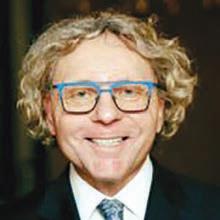
ntil a 13-story building inexplicably collapsed in the middle of the night, placing the whereabouts and lives of 159 residents in doubt, few gave Surfside, Florida, very much thought before now. The town was, after all, a South Florida misnomer. There’s no surfing. The white caps on the Atlantic Ocean never provide enough tubular lift. The people of Surfside skew older. Nearly half its 6,000 residents are Jewish, and of those, many are Orthodox.
You can call Surfside sleepy, but even that wouldn’t describe it. Nothing truly special had ever happened there. Now, with a tragedy so titanic — and still unfolding — its name will become synonymous with misery.
To the casual observer, Surfside was a breakaway township from its more widely known neighbor, Miami Beach, just to its south. Those over the border on Miami Beach, and in Bal Harbour, the
Uvillage to Surfside’s immediate north, for many decades had good reason to regard themselves as South Florida’s very own Old City of Jerusalem — a mixed enclave with a major Jewish quarter, and a bit more decadence.
Surfside didn’t have the Art Deco Jazz Age sparkle or swinger elegance that the Eden Roc and Fontainebleau hotels offered back in the 1950s into the ’70s. In Surfside, the Americana was the swankiest hotel. It once showcased a very young Jackson 5, long before any Billie Jean took notice of Michael. A rare excitement, but the town’s residents didn’t beg for more. Surfside enjoyed the stillness — on land and sea.
I know about Surfside. I grew up on 74th Street on Miami Beach. The horrific spectacle that FEMA has now declared to be a national emergency site is on 87th Street. By the time the Champlain Towers was built in 1981, I had long decamped for college and then New York.
I frequently return to Miami Beach, but mostly in my imagination. Many of my novels have featured scenes with Miami
Beach as the backdrop. My last one, “How Sweet It Is!,” selected by the City of Miami Beach as its Centennial Book, is a nostalgic return to 1972 — a valentine, I call it — when Miami Beach was, oddly, the center of the world.
During that summer, Miami Beach hosted both the Democratic and Republican nominating conventions. Unlike the infamous Democratic National Convention in Chicago in 1968, the Miami Beach police somehow avoided clubbing the heads of Vietnam War protesters.
Jackie Gleason, who no longer had his TV variety show — once filmed live on Miami Beach — was palling around with his buddy, Frank Sinatra, who had recently retired — for the first time. You could find them drinking in hotels along Collins Avenue, recapturing the easy camaraderie of their younger days at Toots Shor’s saloon near the Theater District in Manhattan.
The cavalcade of stars did not stop there. Muhammad Ali sparred at Angelo Dundee’s 5th Street Gym and did speed
work on the quicksand of the beach — in heavy sweat clothes. He was trying to reclaim the heavyweight championship forfeited when he conscientiously objected to fighting the Vietcong.
Meyer Lansky, the notorious Jewish gangster who two years later would be fictionalized in “The Godfather Part II,” had in 1972 just been extradited from Israel back to Miami Beach to stand trial for tax fraud. He would spend his days at Wolfie’s Restaurant on 21st Street surrounded by an aging crew of Jewish wise guys still smarting over Fidel Castro’s takeover of their Havana casinos in 1959. All of them appear in “How Sweet It Is!” (yes, Gleason’s signature signoff), reimagined, of course — along with one more special guest. The Yiddish novelist Isaac Bashevis Singer, not long thereafter a recipient of the Nobel Prize for Literature, was spending the winters in Surfside. While there he unsparingly fictionalized the Jews of Poland before the Holocaust, and those who survived

OVID-19 is still with us, and that’s an everpresent factor in our day-to-day operations at the Human Services Campus, even with minimal positive cases and continuing vaccinations. We received permission from the Arizona Department of Public Health to add some indoor seating, reducing the distance between people from 6 feet to 3.
We’re working on safely increasing shelter capacity as we plan ahead for the expiration of funding for an isolation hotel, a safe outdoor space and bridge housing hotels. We continue advocating for jurisdictions to coordinate their American Rescue Plan funding so that we actually make systems change and use this once-in-a-lifetime funding opportunity as we move out of our once-in-a-lifetime pandemic.
My social experiment with greeting people with a fist bump or hug seems to be generally well-received. One individual
Cthis week reminded me of the Dr. Spencer Reid character on “Criminal Minds,” who also does not shake hands. A quick Google search finds that Dr. Reid says, “”The number of pathogens passed during a handshake is staggering. It’s actually safer to kiss.”
Indeed. I’m sticking with fist bumps and hugs.
The weather forecast is telling us of excessive heat warnings. High temperatures ranged from 108 to 118 degrees already in June.
We have hundreds of unsheltered, unhoused individuals near our campus, not because they don’t want shelter, but because we have no vacant shelter beds in our community. Respite via shade, misting systems, bottled water and ice packs will alleviate some heat effects. And I am already concerned about the safety of our clients who will sleep outdoors.
Heat kills.
Want to help? Check on your neighbors, particularly the older adults who don’t leave their homes and apartments. Ask the person you see on the street, at
bus stops if they need water; carry bottles of water with you in your vehicle. Work with the faith community to open synagogues, churches and halls for overnight shelter. Call your council person and ask them to use city spaces as temporary shelter.
Want to write a check instead? You can support nonprofit organizations wherever you live. Use Google to search for organizations that serve people experiencing homelessness. Look in your own neighborhood. Call or email and ask what they need. Restrain yourself from assuming you know what the organizations or the clients need. We can tell you, if you ask.
Want to honor our local champion, Mike McQuaid? We have officially launched the Mike McQuaid Legacy Fund to raise $25 million — we are nearly halfway to our goal. The funding will accelerate progress on key objectives that we called “Campus Version 2.0” in conversation with Mike before he passed.
Mike understood and advocated for all strategies that prevent and reduce homelessness. He believed that ending
homelessness is possible. He would probably be shaking his head today that our local communities are not figuring out how to coordinate this amazing one-time funding.
He would be making calls. I would be asking him how we could shift the conversation to frame housing as an infrastructure need. It’s been on my mind that communities align and coordinate and problem-solve together on water, transportation and utilities.
Yet they state that “homelessness is different,” or “it’s too hard to coordinate,” or “not all strategies work in my community.”
Housing is necessary to live. Transportation, water, jobs: None of it matters if you have no place to live. Today I would be talking to Mike instead of keeping it in my head or writing it here, telling him that it is ridiculous to think that neighboring cities (26 in Maricopa County) have to plan differently when it comes to roofs over heads, while they “share” water, utility lines and public
SEE SCHWABENLENDER, PAGE 15
us are correct? Why do we stand up for Israel? Why is it so important to us?
can and when he wants to give to us God can.”
P.M.
SHABBAT ENDS
JULY 10 - 8:23 P.M.
hy are we mourning for the loss of the Temple, Beit Hamikdash, if it was such a long time ago?
The month we start this Shabbat, July 10, is called Av. It’s the month in the Jewish calendar which is considered to be the month of mourning because we lost the two temples and many additional tragedies befell the Jewish people during this time.
As such, there are laws and customs we follow during this time to help us feel the sense of mourning more strongly. Still, we must ask ourselves, do we really feel the great loss? Can we even wonder, why should we feel the loss if it was so long ago?
In the news we always seem to be defending the right for Israel to exist or defending what it does to protect itself. Maybe the news or the people attacking
ROSENBAUM
CONTINUED FROM PAGE 14 and lived in New York thereafter, capturing their comical lives of heartbreak, betrayal and loss.
Ensconced just over the Miami Beach city line, situated right in between two Jewish enclaves populated with those who had fled or escaped one hardship or another, Singer made a canny choice for a writer with a gravitational pull for the shortcomings and desperate moral choices of humankind.
One wonders what he might have written about the Champlain Towers today, a short distance from his own apartment.
All the avenues of Surfside were named for American and British authors. (Just west of the Champlain are Carlyle, Dickens, Irving and Emerson avenues.) Eventually a street would be named for him. He must have enjoyed the irony that some of the hotels of Surfside once restricted Jews. One shamelessly boasted “Always a view, never a Jew.”
Singer strolled the sunbaked landscape in a white suit and impish teardrop fedora. Always taking notes, he fiercely studied and measured the patterns of these transplanted Jews: melting snowbirds and Holocaust survivors looking to the sun to cure memories of more ashen, cloudier days; widows and divorcees looking for a male ticket back to the Northeast or out of loneliness; young families tired of the transit strikes and crime waves of New York; Hasidim
WIn the recent Torah portions, we read about the Jewish people getting ready to enter the Land of Israel after they were in the desert for 40 years. But even once they arrived in the land, there were other nations living in the land and they had to fight wars for 14 years to conquer it. If so, perhaps historically the land of Israel was really not the Jewish People’s first, since as we see they were not the first to settle the land. Maybe we should give the land back to them?
The answer ultimately lies in the first Rashi of the Torah, in Bereshis (1,1) in the name of the Midrash. The reason why the Torah starts with the creation of the world and not with the laws that govern a Jew’s life, is because the Torah is telling us God created the world. Why is it important that God created the world if the Torah has so many important laws to teach? The Midrash says, “If the nations of the world will say to the Jews, you are thieves because you conquered the land from the seven nations, we can answer, God created the whole world and he gave the land to whom he chose and when he wants to give it to them God
This always amazes me, as this was written thousands of years ago and seemingly nothing has changed. We must remember this answer with conviction. The Creator chose to give the Land of Israel to the Jewish People and that is why it’s called the Promised Land. It’s only ours because it was given to us by the Creator.
Why did God choose to give us this land?
It is the land where God chose for the Jewish people to be able to fulfill mitzvot, indeed, many mitzvot can only be fulfilled in Israel. It’s God’s special land. Our reason to live and connect to the land of Israel today is still for the same reason as it has always been: It is a place of service to God, not just a land of escape and refuge for the Jewish People.
Once we fulfill the will of God in this land it becomes the Eretz Hakodesha, holy land, a special place of spirituality. That is its purpose. This is what we now mourn during this month, that we still don’t have the land the way it should be. We are missing the ability to serve our Creator with the temple service. We are missing the clarity of God’s
JULY 17 - 8:20 P.M.
Find area congregations at jewishaz.com, where you can also find our 2021 Community Directory.
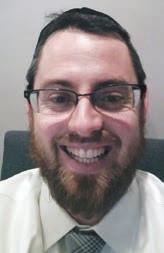
shechinah, relevance and connection.
After we understand why we are defending the Land of Israel, its purpose and the opportunity it gives us, we need to know the exact borders of the land. That is in this week’s Torah portion, which explains the exact borders that are holy and where we can fulfill the will of the creator.
May we merit to live within the borders of the Land of Israel in a time when all fighting will stop and all nations will be at peace with the Jewish People. Then we will be free to serve our Creator in the best, most complete way possible. JN
who dressed in the sweltering Sunshine State as if still in Lublin; and vaudevillians wearing makeup suitable to the burlesque surroundings of Miami Beach.
All of them immortalized in Kodak color, or in the pages of “My Love Affair with Miami Beach,” a book of photos by Richard Nagler, for which Singer wrote the introduction in 1990. Imagine them as Singer once did: plotting affairs, swatting tennis balls, staring at stock tickers, clacking mah jongg tiles, gliding discs along shuffleboard courts and gesturing wildly about socialism.
“For me, a vacation in Miami Beach was a chance to be among my own people,” Singer wrote.
He found them sitting on the Broadway medians and inside the cafeterias on the Upper West Side, too, of course. But the Jews from Miami Beach were somehow of a different species — and not only because they were more prone to skin cancer.
It was a Shangri-La of Jewish misadventure, a shtetl still trembling but without Cossacks, the Chosen People out of choices, the detour of a once wandering tribe — finally at rest in and around sleepy Surfside.
And now it is home to new waves of Jews, reflecting the area’s diversity: retirees, of course, but also younger and wealthier Jewish families, many drawn to a booming Chabad; a large cohort of
Hispanic Jews with feet in North and Latin America; a smattering of Israelis; and more Sephardic Jews than the national average. The residents of the Champlain Towers were asleep until a nightmare roused them. Will any survive to tell this tragic tale? In time, this beachside plot will become another reminder of senseless Jewish death in America — acts of hate, or negligence, or of God: the Triangle Shirtwaist Factory fire in Manhattan and the massacre at Marjory Stoneman Douglas High School in Parkland, Florida; the Leo Frank lynching, The Temple bombing in Atlanta, the Crown Heights riots; and the antisemitic shootings at the Jewish Community Center of Los Angeles and Jewish Federation of Seattle, and then at the Tree of Life Synagogue in Pittsburgh and Chabad synagogue in Poway, California.
At times like these, disasters, whether unnatural or man-made, leave the same feelings of loss.
Miami Beach has served as a refuge for some, and as a playground for others. An infinite coastline of condos always seemed to be rising from the sand. Today, unimaginably, we know that one can come crashing down. JN
Thane Rosenbaum is a novelist, the author of “How Sweet It Is!,” “The Golems of Gotham,” “Second Hand Smoke” and “Elijah Vislble,” among other works of fiction and nonfiction.
CONTINUED FROM PAGE 14
transportation.
No, it doesn’t have to look exactly the same everywhere. And if the stakeholders involved in water planning can do it, we can do it for housing and resolving homelessness. And by “do it,” I mean put down the geographical boundary of a city or town and look at the boundary of the region.
Leave the ego at the door and sit down and figure it out.
Yes, I’m a bit fired up.
While we offer water and shade, there’s consolation that maybe tomorrow the 75-year-old man using a scooter will be able to access a shelter bed, and we will continue to virtually beg elected officials, jurisdictional leaders and business leaders to work together to move away from stating the reasons why something can’t happen.
Our campus is open again for small group tours. If you want to create urgency, invite people to walk 13 acres with me in the middle of any day next week.
I will give them a bottle of water. Meanwhile, love your peeps. Wash your hands. Share (except your germs). Be anti-racist. Listen first to seek to understand. Dream big and act. Be like Mike. JN


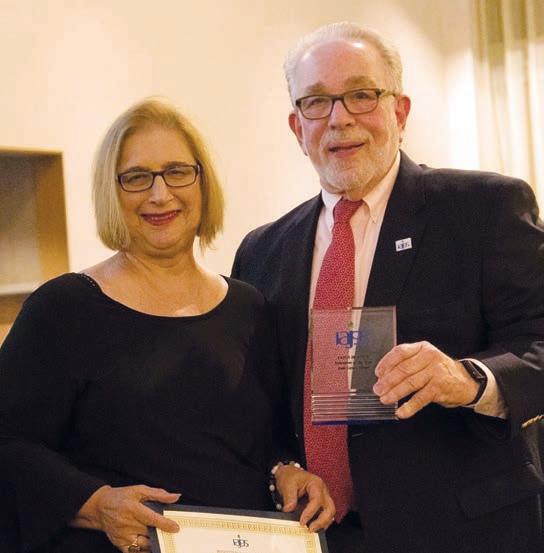 NICOLE RAZ | STAFF WRITER
NICOLE RAZ | STAFF WRITER
Judi Gyory Missel grew up not knowing much about her extended family.
“Because my parents were orphans after the war, they knew about their parents and their grandparents, but there weren’t a whole lot of details,” she said. Birth dates and names of siblings or cousins were among the missing details.
Missel’s mother was 14 when she arrived in Auschwitz. Her father was 19 when he was taken into the Hungarian slave labor battalion during World War II.
“That whole generation of grandparents was gone,” Missel said.
She began researching her family history in her late 30s when she moved to Arizona in 1986. Now 71, she is still finding new information about her family and has helped others do the same. She’s attended the International Conference on Jewish Genealogy, an annual convention put on by the International Association of Jewish Genealogical Societies, at least eight times before. This year is her first as chair of the conference, which is the group’s 41st. It will be virtual and runs Aug. 1-5.
“Some people just want to know their ancestry. But a lot of us are thrilled with the concept of finding a living relative that you didn’t know about,” she said.
Around 900 people from all over the world usually attend in person. Last year was the first time the conference went virtual and more than 2,000 tuned in. It went well despite the sudden shift in format, she said. Missel has high hopes for this year’s conference, having worked out all of last year’s kinks.
Usually, people walk around with badges that have their last name, the town their family is from and a list of some names they are researching. “And it is totally serendipitous that you can walk around with 800 or 900 people and magically spot a name you’re researching on somebody else’s chest,” she said. This year, the virtual conference will re-create that experience — somewhat — and have a tool for people to see who is researching which names.
This year’s conference will also include more than 100 pre-recorded on-demand video presentations and live-stream presentations, both available for 60 days after the conference ends. “We have a huge range of subjects,” Missel said. One speaker is focusing on how to find family history based on family recipes and another is focusing on the history of early Jewish settlers in the United States.
At least three other Arizonans are involved in the conference as presenters.
Risa Daitzman Heywood, who lives in Sun City part of the year, has a company called Research by Risa which specializes in Ashkenazi Jewish research. She’ll host three presentations. Two are about learning which records can be used to find relatives and family history, and another is on a little-known organization in operation from 1900-1922 called the Industrial Removal Office, created to help alleviate overcrowding in the Jewish neighborhoods of New York City.
Janette Silverman lives in Phoenix and heads a
team of researchers specializing in Eastern European and Jewish research at Ancestry ProGenealogists, the division of Ancestry.com that does private client research. She will present about finding and using Holocaust records.
Emily Garber lives in Phoenix and is chair of the Phoenix Jewish Genealogy Group and a board member of the IAJGS and the Arizona Jewish Historical Society. She will present about genealogy learning opportunities available online and how to plan and execute family research. “It’s actually a really good way of learning history,” Garber said. “In a very painless fashion, I have learned so much about the history of some Eastern European countries that I really had not absorbed very well before. I needed to understand where records might be, what the records might be, what happened to my family, and why they left when they did.”
This year’s conference will also have translators available to read documents. A translated document is one of the ways Missel found a living cousin in Australia.
“I had found the obituary of my two-times great-grandfather, but it was in German because it was published in a newspaper close to Bratislava intended for Hungarians,” she said. Missel couldn’t read it so she took it to a translator and recognized her great grandparents’ names. She learned “a wealth of information” like all of his children, in-laws and siblings. She found her cousin using that document along with a DNA test with FamilyTreeDNA.
“We WhatsApp all the time. It’s very cool,” she said. JN
To learn more about the conference and to register, visit iajgs2021.org.

When George Kalman spoke, people listened.
“He was so soft-spoken and so gentle,” said Kim Klett, a teacher. His demeanor was in stark contrast to the subject matter he would often speak about: surviving the Holocaust.

Kalman, who lived in Phoenix, died May 25 at 86. Kalman touched thousands of lives, especially in his work as a Holocaust educator.
He was active in Holocaust education for over 25 years, speaking with a variety of men’s clubs, senior groups and young students.
“Instead of giving a prepared talk, I conduct my meetings as a one-on-one Q&A format,” he told Jewish News in March. “I tell them that I like hostile questions like, ‘I hear frequently that the Holocaust never happened, why?’ Excellent question, let’s talk about it in detail.”
Klett, a twelfth-grade English teacher at Dobson High School in Mesa, hosted Kalman to speak about the Holocaust to her students at least six times over the past 10 years or so.
“I did really see him develop over the years in the way he told his story,” she said. And her students, many of whom are immigrants awaiting permanent citizenship status, related to Kalman.
“They got the idea of somebody looking for you — of somebody not wanting you there,” she said.
Kalman also spoke with kids through the Arizona Jewish Historical Society.
“His impact was immeasurable,” said Tony Fusco, education coordinator at AZJHS. “He was a wonderful person and he made an emotional connection with the kids. He was able to really make them feel his story.”
Sheryl Bronkesh, president of the Phoenix Holocaust Association, said Kalman was dedicated to educating students.
“Whenever we asked, ‘Could you speak?’ or, ‘Could you do something?’ I just can’t remember George ever saying, ‘Wait, let me check,’ or, ‘I’ll see if I feel up to it.’ He just always did it. And, unfortunately, because of the shrinking number of survivors who are able to do this, his death is an incredible loss to Holocaust education.”
Kalman was kicked out of the third grade for being Jewish. He was 9 years old when he was shoved into a cattle car in Szeghalom, Hungary to be deported to a labor camp in Austria. He was 10 in April 1945, when the camp was liberated by the Russian Red Army. After the Hungarian Revolution in 1956, his
mother encouraged him to leave the country, and he escaped by walking across the border into Austria.
As interested in educating people about the Holocaust as he was in his later years, Kalman wasn’t always so open and willing to share his experience.
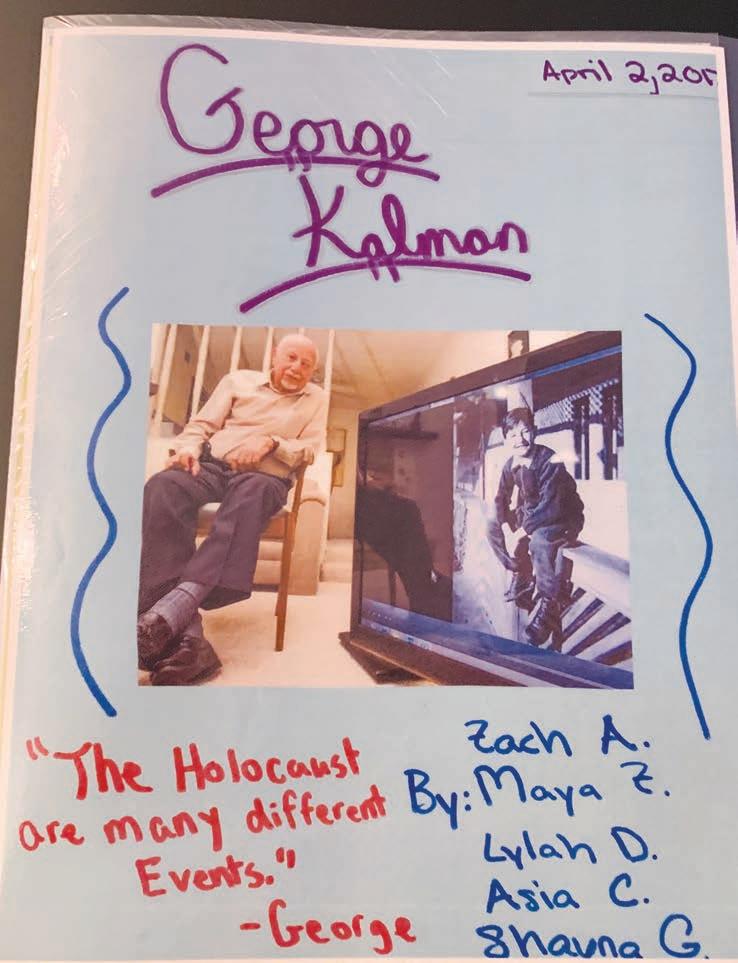
“It wasn’t really until he was much older — almost to the point he was retired — that something changed and he could pay more attention to it and be able to talk about it,” said Claire Kalman, his daughter.
She said her dad was passionate about education and always looked forward to talking to the kids and finding out what their questions were.
He also began learning about Judaism and studying Torah later in life.
“When retirement came, he began making up for those lost years of Torah study, and he always believed in education,” she said. “Growing up, he would say, ‘Your job is to go to school and to learn.’”
Kalman moved to Mesa in 1993, where he went to Temple Emanuel of Tempe. Emanuel Rabbi Emeritus David Pinkwasser said he would see Kalman frequently at services. “No matter whether the service was a contemporary one or a traditional one, he attended. And when I taught adult education Torah study, he was there.”
Kalman was knowledgeable about many things and could have a conversation about almost anything, he said.
“I think that’s what people liked about him,” Pinkwasser said. “You could discuss politics, you could discuss religion, you could talk science with him, music and foreign language. And he was knowledgeable in all those areas. But not pushy.”
Claire Kalman said her dad was just about as passionate about bridge as he was about Holocaust education. He also had a passion for classical, jazz and gypsy folk music. After hearing just a few notes or bars of classical music, he could name the piece and the composer. He loved traditional Hungarian food and those who knew him well sometimes found themselves treated to homemade cold cherry soup, körözött or chicken paprikash.
He is survived by his daughter, Claire Kalman and son, David Kalman. Pinkwasser led the funeral service on June 1. JN
In honor of George’s life, donations can be made to any of the following: Phoenix Holocaust Association phxha.com/donate/; American Contract Bridge League — Educational Foundation acbleducationalfoundation.org/ donate.php; or McGill University’s Student Aid and Scholarships alumni.mcgill.ca/give/index. php?new=1.

uring the pandemic, we found ourselves isolated to the confines of our homes. If we were lucky, we had a partner, maybe even a family, to share these stay-at-home orders. It was nice not to have to be alone during what would end up being a very scary time in our lives. Prior to the pandemic, this serious problem already existed for older adults: They were experiencing social isolation and loneliness at an exceedingly high rate of growth.
This is not just a senior issue anymore. Over the past 16 months this issue has affected children, teenagers, young adults and mature adults. This experience of social isolation hit all of us. We learned very quickly that social isolation and loneliness were an equal opportunity offender. Seniors were among the most vulnerable populations, but all of us were affected in one way or another and we had to figure out how to exist in this new world. There were also many innovations in science, and the adoption of new
Dtechnologies and streamlining of processes helped alleviate the situation.

If there is one thing that we can all be thankful for, it is that this happened in a time when we have made advances in both technology and science. Imagine if this happened 30 years earlier in 1990.
We could not have developed a vaccine so quickly then. It would have taken at least four years to develop a vaccine from start to finish in 1990, and Messenger RNA vaccinations had not even been developed.
The way we connect now is also very different. Now, we live in a day and age where nearly everyone can connect via personal computers, internet, Zoom calls, email and Amazon Prime. These things simply did not exist back in 1990.
our technology to have virtual meetings with our clients/customers, colleagues, conferences and trade gatherings. It has been nothing short of amazing that we have been able to stay connected, but doing so in a one-dimensional medium makes it really difficult to stay engaged and have meaningful visits.
spiritual, mental and social/emotional. It’s all about being more effective in our life’s work.
Last week, I was able to work on this particular habit, and I would not have been able to receive the materials, information and connections without having had this in-person experience.
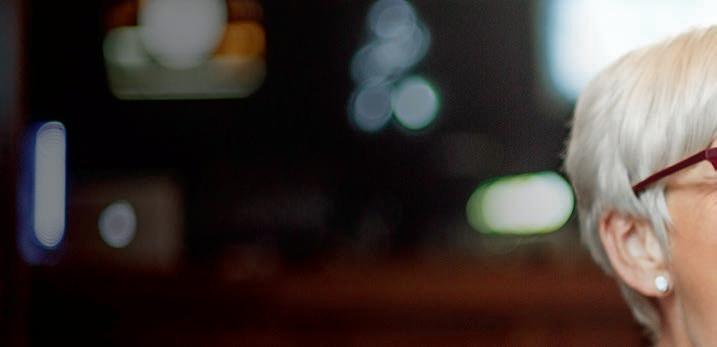
Social connection can lower anxiety and depression, help us regulate our emotions, lead to higher self-esteem and empathy, and actually improve our immune systems. By neglecting our need to connect, we put our health at risk. The reality is that during this pandemic we were living in a time of true disconnection despite the technology.
For those that sheltered by themselves, or with a partner or family, the effect of this experience offered the opportunity for individuals to be more introspective and reflective of one’s values, trust and leadership in the future. It enabled many people to find new ways to discover or rediscover things that are truly important to them.
Let’s not minimize the technology, but nothing can compare to getting together in person. Last week, I attended a leadership conference for the home care trade called Home Care 100 and went on to spend three amazing days with inspiring and thought-provoking content, held quality conversations with my peers and saw old friends and made many new ones. The conference kicked off with some valuable insights on leadership from former Secretary of State Colin Powell and how trust is integral to your role as a leader. While Powell could not be with us, we used technology to bring him in while the rest of the conference was in person.
My takeaway from attending the Home Care 100 Leadership conference is that the warm feeling of human connections is still very important in maintaining our overall physical, spiritual, mental and social/ emotional well-being.






In our work lives we have had to use
Stephen Covey wrote about “sharpening the saw” in his “7 Habits of Highly Effective People.” This seventh habit is about taking the time to renew and refresh four dimensions of our natures: physical,
Let’s hope and pray that we have made the turn on this pandemic, and we can get back to these in-person visits that we as human beings crave. JN
If you asked Shlomo Pri-tal 30 years ago what his retirement would look like, he never would have imagined it would include making glass art.
“I thought I would start studying Spanish, go take physics classes — I like physics. But then again, I don’t study Spanish. I don’t take physics classes. I’m doing something that I didn’t think I was gonna do, which is glass.”
Pri-tal, 74, retired in 2017 after a long career with Motorola. Shortly after, he discovered glass art when his wife asked him to make new house numbers for the exterior of their Phoenix home. He thought it would be nice to make them out of glass and he and his wife have a friend, Barbara Becker, who owns Art for Fun! Studio and Gallery.
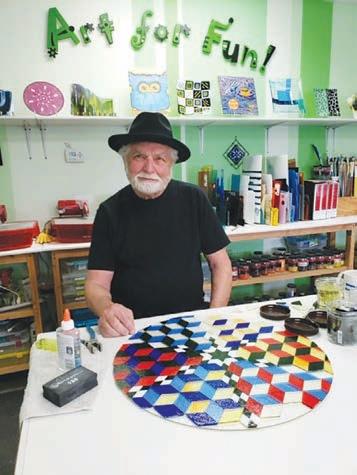
“So I made the numbers. And then from there, I started to make more things,” he said. He likes the planning that goes into making a design and then physically cutting and gluing the pieces together to bring the plan to fruition.
He’s made Chanukiahs, candlesticks, dishes, lazy Susans, a skylight and decorative plates. One of his favorite things he’s made so far is a seascape — a decorative piece modeled after an aquarium, with glass fish, coral, starfish, an octopus and even seahorses.

“There’s hardly any space to put any more art in my house,” Pri-tal joked. “I give it to my children, I give it to friends.” He doesn’t want his hobby to feel like work, he said, so he doesn’t actively sell his art.

Earlier this year, he donated one of his pieces, a Chanukiah, at an art auction for Wise Aging, a program through the Bureau of Jewish Education and The Jewish Federation of Greater Phoenix.
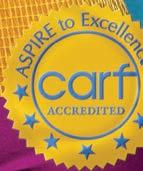


“I was so touched when he said he would
donate, because sometimes people are not as open to donating as they are to selling,” said Diana Nashban, who was the chairperson for the silent art auction. “It was a beautiful Chanukiah; he uses many different colors of glass. I was lucky because it got to sit in my house until the auction was over.”
Five people bid on the item and it ended up selling for $250. Pri-tal said that was the third Chanukiah he had donated over the past few years. One of them went for $450, he said.
“It’s nice stuff and I would buy it myself,” he said.
Pri-tal would think about retirement throughout the years while working at Motorola. He figured he would take classes and focus on photography, which he always liked. But the wall space in his house quickly filled up. With glass art, he can also incorporate photography, building glass scenes from photographs.
He laughs thinking about his younger self reacting to his current hobby. “I didn’t have any inclination or desire to do that,” he said. “I got into it, and it’s nice and I like doing it.”
Randee Pri-tal, his wife, said Shlomo has always been very creative. “When he was working in his career, his creativity took a more technical route. He’s always been able to think outside the box.”
Still, Randee was surprised at the quality of what Shlomo would bring home when he first started his hobby. “He’s never done anything like this before, but with each piece he brought home, it was like, ‘Wow, this is really nice.’”
They have a 5-year-old grandson. And so far, he hasn’t broken anything — “yet,” Shlomo laughed. JN
JFCS returns to The Palazzo: 1:30-2:30 p.m.
The Jewish Family & Children’s Service Center for Senior Enrichment is open again for in-person classes and events. Enjoy a live concert by musical duo Rusty Ferracane and Craig Bohmler at The Palazzo, 6250 N 19th Avenue. The program will be followed by complimentary ice cream. For more information and to RSVP, email janet.rees@jfcsaz.org.

FRIDAY, JULY 9
Splish Splash Tot Shabbat: 9:30-10:30 a.m.
Celebrate Shabbat while staying cool by the Martin Pear JCC splash pad. We will sing songs, story time, a craft and splash. Children under 3 must wear a rubber pant over their swim diaper. Cost: Free. Hosted by PJ Library and Playdates By Design. Registration required at playdatesbydesign.com/event-details/ splish-splash-shabbat.
Deli Days in Sedona: To honor Clarkdale police and benefit Jewish Community of Sedona and the Verde Valley, Sybil Melody, JCSVV board member, picks up lunch order from Clarkdale Police Chief Randy Taylor for Deli Days Sandwiches. They are being gifted by a JCSVV member to highlight the men and women of the Clarkdale Police Department with the profits of the sale benefiting the JCSVV.
WEDNESDAY, JULY 14
Beth Ami Temple Fressers: 6 p.m. Join us to dine at restaurants once a month. Interested in learning more? Contact Isabell Meth at imeth@cox.net.
FRIDAY, JULY 16
Splish Splash Tot Shabbat: 9:30-10:30 a.m.
Celebrate Shabbat while staying cool by the Martin Pear JCC splash pad. We will sing songs, story time, a craft and splash. Children under 3 must wear a rubber pant over their swim diaper. Cost: Free. Hosted by PJ Library and Playdates By Design. Registration required at playdatesbydesign.com/event-details/ splish-splash-shabbat.
SUNDAY, JULY 25
The Rice Brothers - Jazz, Ragtime, Classical and More: 3 p.m. The Arizona Jewish Historical Society Summer Music Series presents a live performance by The Rice Brothers, ”Jazz, Ragtime, Classical and More.” They are originally from Phoenix and have been enthusiastically received by audiences of all ages and walks of life in venues throughout America and in Europe. The performance will be in-person and COVID-19 social distancing protocols will be observed. Cost: $20 for AZJHS members, and $25 for guests. For more information, and to register, visit azjhs.org/ the-rice-brothers.
Temple B’rith Shalom Meet n’ Greet: 11 a.m.-1 p.m. Schmooze with fellow Jews of the Quad-city area during a meet n’ greet with Temple B’rith Shalom at the Phippen Museum in Prescott. We will have a delicious brunch of bagels and mimosas and exquisite art to view. Cost: Free. For questions, contact Rabbi Julie Kozlow at juliekozlow56@gmail.com.
WEDNESDAY, JULY 28
Phoenix Art Museum and Dinner: 3 p.m. Join us as we take a self-guided tour of the Phoenix Art Museum. Explore the museum’s current exhibitions and collections, then enjoy a prepaid dinner at Palette, the museum’s
restaurant. Dinner will include an entrée, dessert, and cocktail. Cost: $40 for MPJCC members, $50 for guests. For more information and to register, visit jewishphoenix.regfox.com/ summer-outings-with-the-j.
TUESDAY, AUG. 3
Northern Arizona Wine Tour: 9:30 a.m.-5:30 p.m. This Northern Arizona Wine Tour includes private tastings for our group at three wineries in the Cornville/Cottonwood Vineyards region, lunch at one of the vineyards, and round trip private transportation to and from The J in a luxury van. Space is limited to 14 people. Cost: $250 for MPJCC members, $280 for guests. For more information and to register, visit jewishphoenix. regfox.com/summer-outings-with-the-j.
SUNDAY, AUG. 8
Open House: 11 a.m.-1 p.m. Temple Beth Sholom of the East Valley will host an open house. For more information, visit tbsev.org.
FRIDAY, AUG. 13
Wise Aging: 11:30 a.m. - 1 p.m. In this virtual Bureau of Jewish Education course, learn positive ways to navigate a meaningful transition to your next chapter on life’s journey. Wise Aging is designed specifically to meet the social, emotional and spiritual needs of Jewish seekers entering second adulthood. Explore the tools and resources to age wisely through the lens of Jewish wisdom. Cost: $10. For more information and to register, visit bjephoenix.org/ course-events/2021/08/13/wise-aging.
WEDNESDAY, AUG. 18
Arizona Broadway Theatre and Dinner: 5:30 p.m. Come see “The Spitfire Grill” at the Arizona Broadway Theatre and have dinner. The show tells the story of a young woman just released from prison who decides to start her life anew in a rural town in Wisconsin. Cost: $75 for MPJCC members, $85 for guests. For more information and to register, visit jewishphoenix.regfox.com/ summer-outings-with-the-j.
SUNDAY, AUG. 22
Jazz Con Alma featuring vocals by Todd Herzog: 3 p.m. The Arizona Jewish Historical Society Summer Music Series presents a live music performance by Jazz Con Alma “featuring vocals by Todd Herzog.” A mainstay in the Phoenix jazz and latin scenes, Beth Lederman has been playing keyboards professionally for more than 35 years, and Todd Herzog’s musical education includes being a vocal jazz major in college and it shows in his phrasing and great interpretations of jazz standards. The performance will be in-person and COVID-19 social distancing protocols will be observed. Cost: $20 for AZJHS members, and $25 for guests. For more information, and to register, visit azjhs.org/jazz-con-alma
WEDNESDAY, AUG. 25
Happy Hour: 7 p.m. Temple Beth Sholom of the East Valley is hosting a Zoom happy hour. For more information, visit tbsev.org.
MONDAY, JULY 12
Understanding the Centrality of Social Justice: 1-2 p.m. In this virtual presentation, Rabbi Rick Jacobs, president of the Union for Reform Judaism, will delve into the essential practice of social justice in Jewish life through classic Jewish sources and contemporary issues. Cost: $18. For more information and to register, visit valleybeitmidrash.org/event/just-judaismunderstanding-the-centrality-of-social-justice/.
TUESDAY, JULY 13
MIM: 11 a.m.-noon. Join the JFCS CSE for a virtual Musical Instrument Museum program. Put your jazz knowledge to the test by participating in a MIM Quiz with Katie Palmer, MIM’s curator of education. There will be exciting trivia for you to share your expertise and learn something new. Special attention is given to Ella Fitzgerald and Louis Armstrong, featuring guided questions, listening examples, and video clips. For more information and to register, visit jfcsaz.org/ events/. Contact CSE Director Jennifer Brauner at seniorcenter@jfcsaz.org or 602-343-0192 with questions.
Lyricists and Performers: 1-2 p.m. Nicole Pesce returns for a 3-part series called: Composers, Lyricists and Performers. July’s program features Lyricist Sammy Cahn, whose written words are embedded in “I’ll Walk Alone, “I’ve Heard that Song Before,” “It’s Magic,” “Come Fly with Me” and so many more. For more information and to register, visit jfcsaz.org/events/. Contact CSE Director Jennifer Brauner at seniorcenter@ jfcsaz.org or 602-343-0192 with questions.
THURSDAY, July 15
Lunch and Learn: 11 a.m.-Noon. In this presentation by the New Carpa Theatre Company learn about the two sould of Cesar Chavez. He was one of the most influential civil rights activists in American history. In 1962, Chavez and Dolores Huerta co-founded what eventually became the United Farm Workers’ Union (UFW). “The Two Souls of Cesar Chavez” imagines the final night of Chavez’s life as he takes stock of his role in the fight for civil rights. The celebrated farm labor organizer died in his sleep at the home of a family friend near his birthplace in southern Arizona on April 23, 1993, at age 66. For more information and to register, visit jfcsaz.org/events/. Contact CSE Director Jennifer Brauner at seniorcenter@ jfcsaz.org or 602-343-0192 with questions.
MONDAY, July 19
Making Your Mark: 1– 2 p.m.: Join mixed media artist and arts educator Genise McGregor for a refreshing Zoom workshop that dives into experimenting with paper. Take a tour of how exploring materials can influence artists and evolve their artworks. Dip your toes into the pool of your curiosity as you experiment to find out just how many ways you can work with this magnificent medium. For more information and to register, visit jfcsaz.org/events/. Contact CSE Director Jennifer Brauner at seniorcenter@ jfcsaz.org or 602-343-0192 with questions.
TUESDAY, JULY 20
Colonialism, Pluralism and Belonging in America: 1-2 p.m. In this virtual presentation, Dr. David S. Koffman, the J. Richard Shiff Chair for the Study of Canadian Jewry and an associate professor of history at York University in Toronto, Canada, will investigate the history of American Jewish relationships with Native Americans. Cost: $18. For more information and to register, visit valleybeitmidrash.org/event/the-jews-indiancolonialism-pluralism-and-belonging-in-america/.
Introduction to Opera: 11 a.m.-noon. With discussions about the evolution of opera, as well as information about recitative vs. aria, voice types, and other major composers, this is
a perfect crash-course to introduce you to this incredible art form. For more information and to register, visit jfcsaz.org/events/. Contact CSE Director Jennifer Brauner at seniorcenter@jfcsaz. org or 602-343-0192 with questions.
THURSDAY, July 22
Pajama Genealogy: 11 a.m.-noon. Judi Gyory Missel, a member of the Phoenix Jewish Genealogy Group and the International Association of Jewish Genealogical Societies, has been fascinated by genealogy for over 30 years. Join this 4-part series to explore how to search your family roots from the comforts of your own home. For more information and to register, visit jfcsaz.org/events/. Contact CSE Director Jennifer Brauner at seniorcenter@jfcsaz.org or 602-343-0192 with questions.
TUESDAY, JULY 26
The Conversation Between Liturgy and Poetry: 1-2 p.m. Liturgy is a kind of sacred poetry, using metaphors and imagery that spoke to our ancestors. What happens when we pair our liturgy with more contemporary poetry? How does poetry help us better understand the yearnings, pain, joy, and questions expressed in our liturgy? And how does it offer us new insights and ways to grapple with the big questions, with doubt, and with our aspirations? Rabbi Hara Person, who is the Chief Executive of Central Conference of American Rabbis, will address these questions in this virtual presentation. Cost: $18. For more information and to register, visit valleybeitmidrash. org/event/a-sacred-dialogue-the-conversationbetween-liturgy-and-poetry/.
TUESDAY, AUG. 3
Where I’m From: Your Jewish Memoir: 1-2 p.m. Have you ever wanted to write down some of your life stories? Join Janet R. Kirchheimer, a Clal Teaching Fellow to figure out how and where to start. Cost: $18. For more information and to register, visit valleybeitmidrash.org/event/ where-im-from-your-jewish-memoir/.
THURSDAY, AUG. 5
What’s Jewish about Fat Activism: 12-1:30 p.m .Founder and president of Fat Torah, Rabbi Minna Bromberg will lead a virtual class in learning about the Jewish roots, as well as the Jewish future, of the body liberation movement. Explore both the history and the current state of fat activism and body positivity, and look at how Jewish communities and Jewish values have an important role to play.Cost: $18. For more information and to register, visit valleybeitmidrash. org/event/whats-jewish-about-fat-activism/.
MONDAY, AUG. 9
The Messianic Idea: 1-2 p.m .Rabbi Avi Orlow, vice president at the Foundation for Jewish Camp, will virtually lead a class on the Messianic idea. Cost: $18. For more information and to register, visit valleybeitmidrash.org/event/the-messianic-ideaa-conversation-with-rabbi-avi-orlow/.
MONDAYS
Partners in Torah: 7:30 p.m. Join a growing group of inspired learners with Project Inspire. Cost: Free. Tune in at: us04web.zoom. us/j/3940479736#success, password is 613. For more information, email Robin Meyerson at robin@projectinspireaz.com.
Ethics of Our Fathers: 7 p.m. Learn with Rabbi Zalman Levertov online. Tune in at: bit. ly/2Y0wdgv. Cost: Free. For more information, visit chabadaz.com.
Quotable Quotes by our Sages: 7 p.m. Learn with Rabbi Shlomy Levertov online. Tune in at: JewishParadiseValley.com/class. Cost: Free. For more information, visit chabadaz.com. Learning to Trust in God: 7:30 p.m. Learn with Rabbi Yossi Friedman online. Tune in at: ChabadAZ.com/ LiveClass. Cost: Free. For more information, visit chabadaz.com. JN
Arizona State University’s Jewish graduates are honored at the Elegant Seniors BBQ. The students received special gifts and were addressed in the commencement speech by Chabad pillars Warren and Judy Levenbaum.
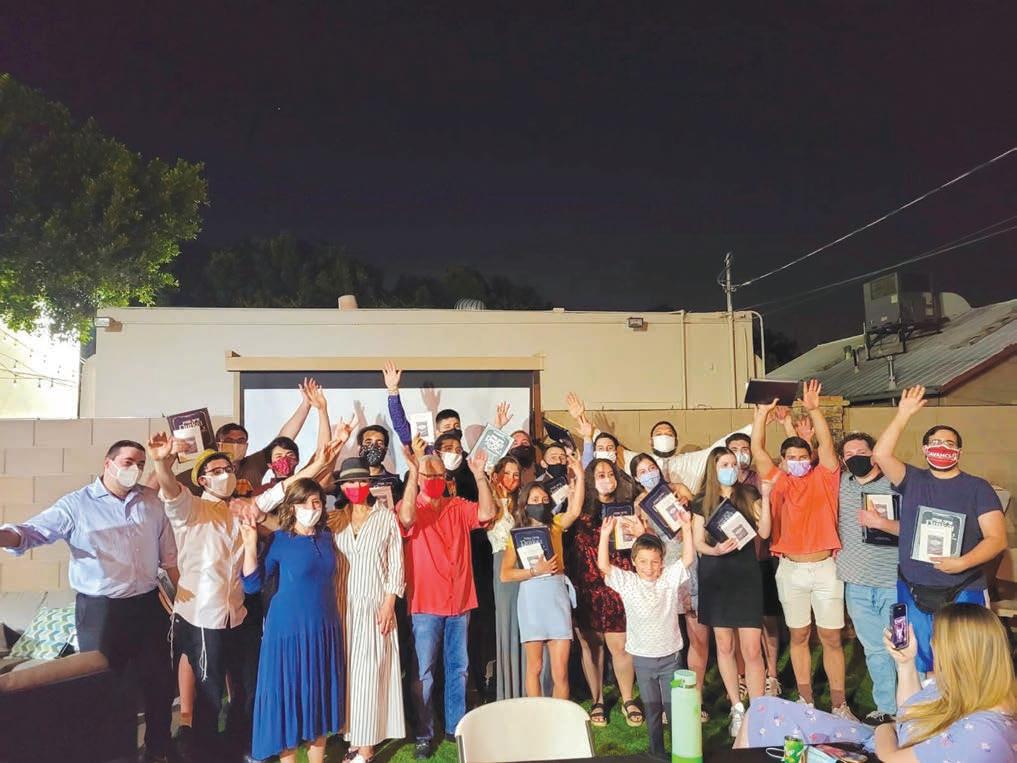
Sybil Melody, a board member of the Jewish Community of Sedona and Verde Valley, picks up a lunch order from Randy Taylor, Clarkdale’s police chief, for Deli Days Sandwiches. The event honors the Clarkdale police.
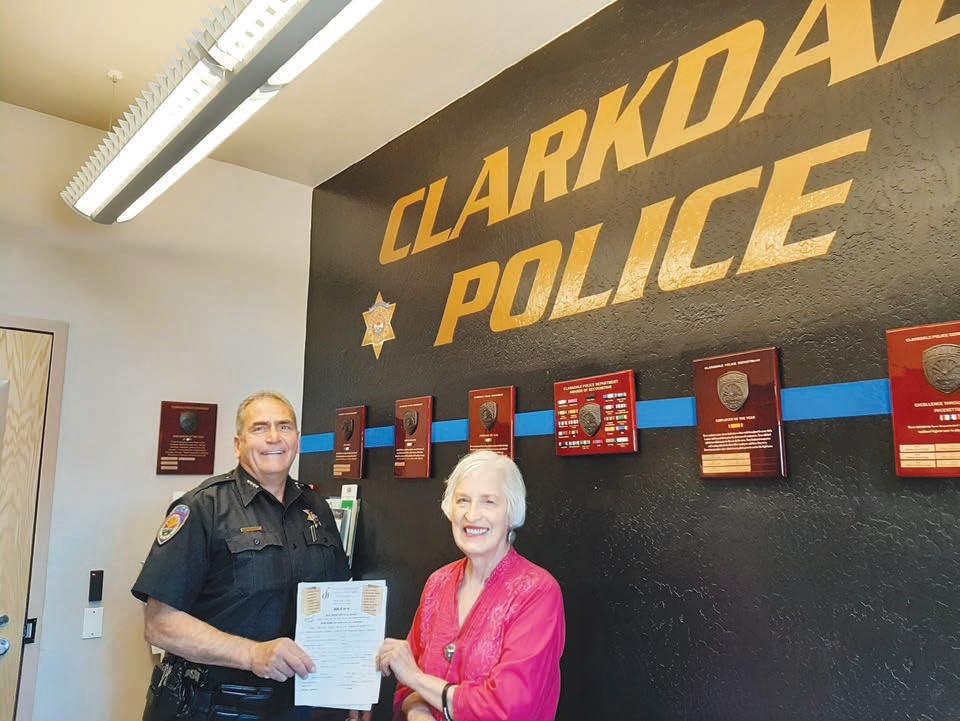
Hadassah Valley of the Sun explored the meaning and beauty of Havdalah: Havdalah, Sacred Time & Sacred Space-Bringing the Holy to the Everyday. It was led by Erica Morris Erman . PHOTO BY TERRE FOREMAN
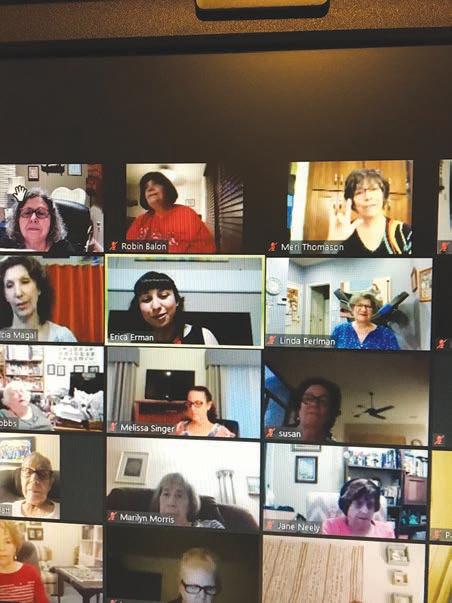
Campers romp in bubbles on hot afternoons at Shemesh Camp at Martin Pear Jewish Community Center.
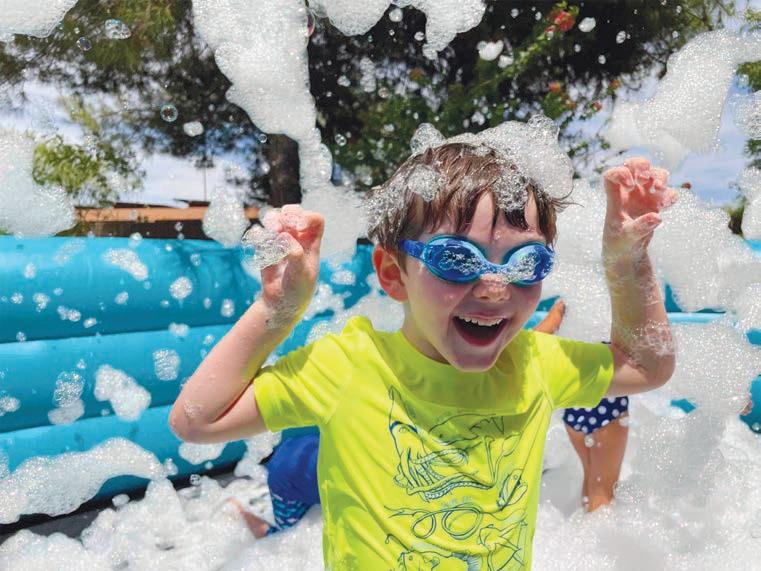
Phoenix Girl Scout Daisy Troop 3589 initiated and promoted a donation drive to collect supplies and food for the Jewish Family & Children’s Service Just 3 Things food pantry.

OBITUARY
CHARLOTTE BERNSTEIN
Charlotte Bernstein, 85, died June 3, 2021. She was born in Brooklyn, New York and lived in Phoenix.
She is survived by her daughters, Robin Bernstein, Michell Bernard and Bridget Solomon; son, Ira Bernstein; five grandchildren; and six great-grandchildren.
Services were held at Menorah Gardens & Funeral Chapels.
Arrangements by Menorah Gardens & Funeral Chapels.
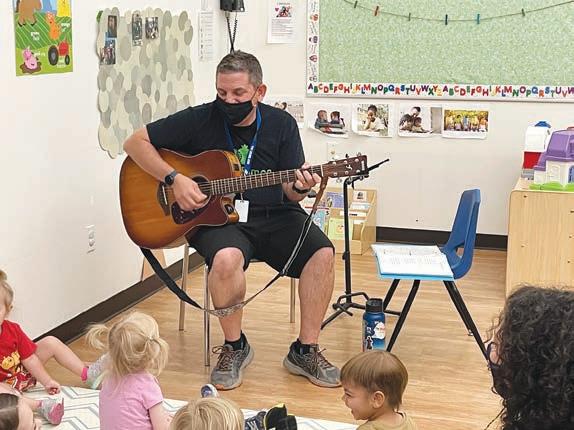
TODD FEIGENBAUM
Todd Feigenbaum, 57, died June 7, 2021. He was born in the Bronx, New York and lived in Chandler.
He is survived by his wife, Samantha Feigenbaum; daughter, Carrie Feigenbaum; and brother, Eric Feigenbaum.
Services were held at Mt. Sinai Cemetery.
Arrangements by Sinai Mortuary.
GAIL LENORE FELDMAN
Gail Lenore Feldman, 75, died June 22, 2021. She was born in New York City and lived in Fountain Hills.
She is survived by her husband, Bernard Feldman; sons, Ari and Joshua Feldman; and one grandchild.
Services were held at Chabad of Fountain Hills.
Arrangements by Messinger Fountain Hills Mortuary.
BARBARA SHIRLEY ZEICHIK
Barbara Shirley Zeichik, 90, died June 22, 2021. She was born in Detroit and lived in Las Vegas.
She is survived by her daughter, Evelyn (Gerald) Lewinson; sons, Allen (Cheryl) Zeichik and Richard (Colleen) Zeichik; brother, Donald Stone; eight grandchildren; and three great-grandchildren.
Services were held at Mt. Sinai Cemetery.
Arrangements by Sinai Mortuary.
Ella Lane Schultz became a bat mitzvah on June 5, 2021, in Atlanta. She is the daughter of Jocelyn Lane and Joseph

Grandparents are Elsa Bilton of Atlanta; and Sherrie and Robert Lane of Phoenix; and Selma Schultz of Atlanta and the late
A student at The Weber School, Ella enjoys piano, guitar, sewing, swimming and ultimate frisbee. JN
There are some who bring a light so bright to the world that even after they have Andrew, “Andy” , left us a piece of his light as he departed his physical body and joined God on May 29, 2021, at age 28, from his home in Tempe. His light entered this world when he was born in Boston on January 9, 1993. He graduated from Marcos de Niza High School and trained in artistic pursuits at Seeds for Autism program in Phoenix, starting at age 16 until his passing. Andy departed peacefully at home after years of fighting his way back from complex epilepsy and autism.
He lived a passionate life to the fullest and never let his disability get in his way. He was a member of Arizona Autism United and Seeds for Autism from their beginnings. He loved hiking, fitness, swimming, word puzzles, movie centers, travel and time with his family. He is survived by his parents, Aura and Mark Rubin; his siblings, Arielle and Alex Rubin, Amy Feder, Aaron and Anna Blocher-Rubin; his nieces and nephew, Zoë, Ilycia and AaronCrosby; his aunt, Roberta Rubin; his uncle and aunt, Carlos and Yari Villamil; his cousins, Paola and Carlos-Andres; his grandparents, Adneris Sanchez and Carlos Villamil Sr.
Andy had exceptional ways to inspire entire communities to act and serve the autism community. Andy’s example, leadership and teachings motivated countless individuals to pursue service in the autism community. Andy’s impact did not require words and was felt by all who met him. He never complained in any way about his autism or epilepsy. His courage and fortitude gave strength to others. Andy’s legacy helped influence several nonprofit organizations, including Arizona Autism United, Seeds for Autism and the Autism Society of Greater Phoenix. His personality was infectious, kind, gentle and always considerate of others. His radiant shining smile will be in our hearts forever. His proudest accomplishments included his athleticism and his artistic development and creativity. Andy saw the world through a lens like no other. He lived every day with wonder and excitement of what was to come, always ready for the next adventure. Andy is carrying on his next adventure without us for now, yet we know we will join him someday. We believe it will be at some of his favorite places: mountaintops, beaches of San Diego, rainforests of Puerto Rico, finding Grandpa Stanley Rubin in heaven and spiritually coming back to his home of 26 years in Tempe.
Stacey Michelle Marx, 39, our beloved daughter, sister and true friend passed away peacefully on June 13, 2021, surrounded by her family. She is survived by her parents, Martin and Gail Robins; and her sister, Rachel (Landon) Jensen.

Stacey was born in Ft. Lauderdale, Florida on May 28, 1982. She relocated to Arizona in 1988. She graduated from Paradise Valley High School in 2002. She then attended PVCC and graduated in 2006. She worked at Harkins Theaters for 14 years. Stacey’s hobbies included spending time with her sister Rachel, doing karate, playing board games, going to the movies and eating out with friends.
Stacey had a huge, caring heart for others. She loved to laugh and make people smile and feel special. Stacey loved getting together for holidays and treasured the time she spent with family.
She will be forever in our hearts and will always be our inspiration. We love you forever Stacey.
In honor of Stacey’s memory, donations may be made to:
Cortney’s Place
9000 East Shea Blvd., Suite 1430, Scottsdale, AZ 85254 OR
Hospice of the Valley
1510 East Flower Street, Phoenix, AZ 85014
Lynn Irwin Raskin, 85, passed away, surrounded by his loving family, on Saturday, June 12, 2021. He was born in Oklahoma City, Oklahoma on August 29, 1935, to Martha and Melvin Raskin. He moved to Phoenix at a young age and graduated from West Phoenix High School. He attended the University of Arizona and was a member of ZBT fraternity and graduated in 1957 with a Bachelor of Science in business. This led him to a successful career as a jeweler. He worked with his father at Raskin’s Jewelers in Phoenix until 1963. Lynn then moved to Prescott and opened Raskin’s Jewelers there. He was a graduate gemologist, an active member and a dancer of Smoki ceremonials, a master mason, a member of Sunrise Lions and was a founding member of Temple B’rith Shalom.
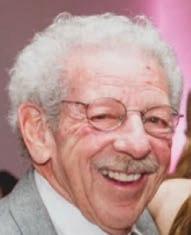
His most important contribution to the world, however, was being an excellent husband, father and grandfather. He married the love of his life, Arlene, in 1961, and just two days before passing, he celebrated 60 years of a wonderful marriage and life with her and their family. He cherished the memories of camping, skiing, boating and traveling the world with his wife, children and many friends. He enjoyed painting, gardening, listening to classical music and had the biggest heart for animals, especially dogs. Lynn was a brave, gallant, gentle and courageous man.
Lynn is survived by his wife, Arlene Raskin; his children, Andrea Raskin, Greg (Renee) Raskin, Jeff (Norie) Raskin and Stephanie Shuey; his grandchildren, Zachary, Derek, Alex, Drew, Carren, Emily, Mackenzie and Tessa; and sister, Hope (Marshall) Talbot. He is preceded in death by his grandson Kevin Raskin.
Funeral services were held at Sinai Mortuary, 4538 North 16th Street, Phoenix, on Wednesday, June 16, 2021.
